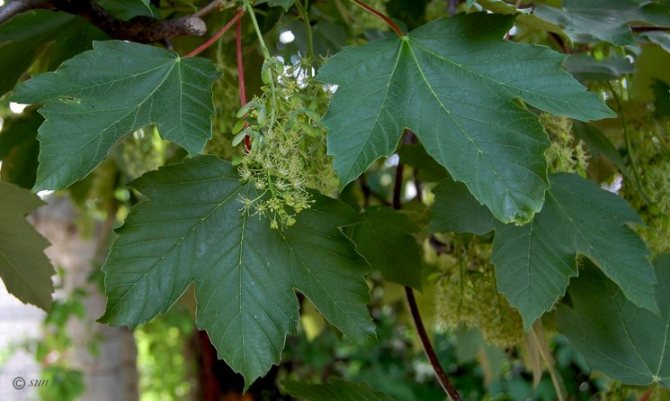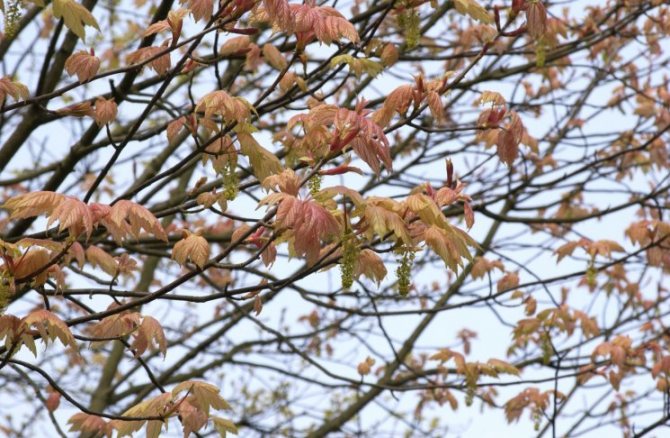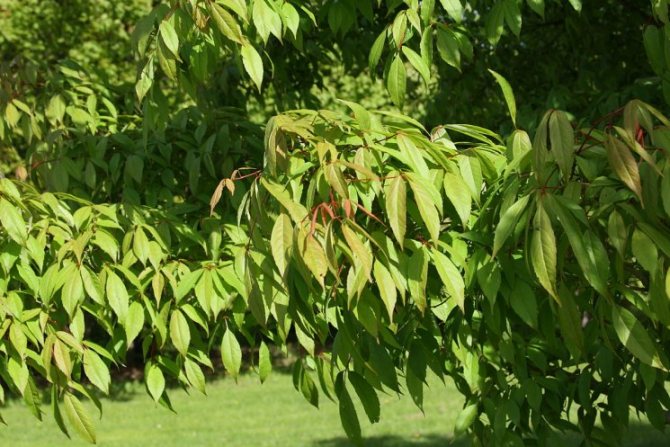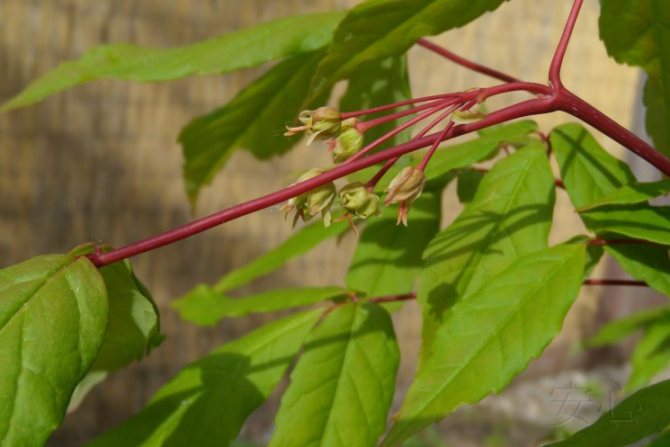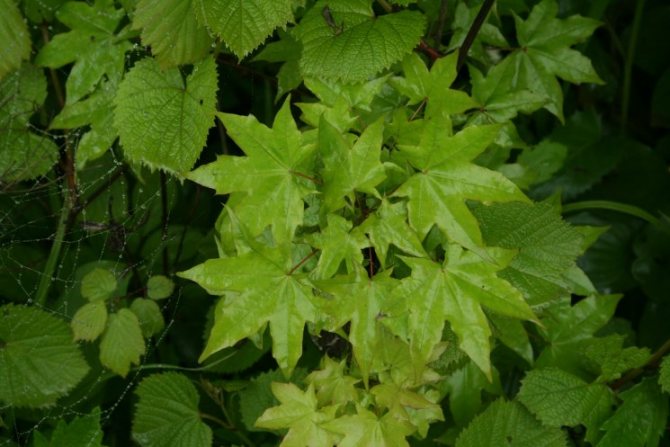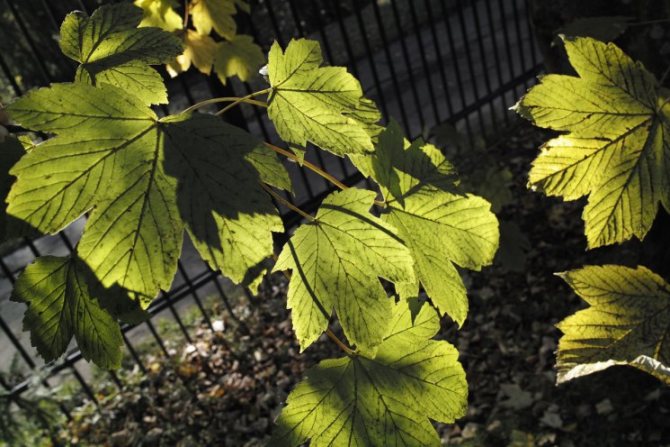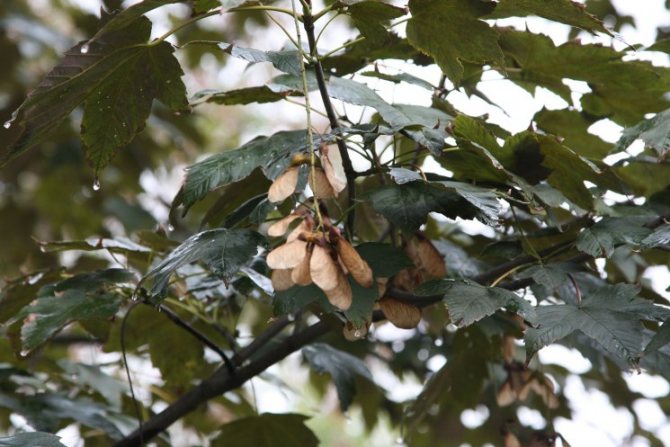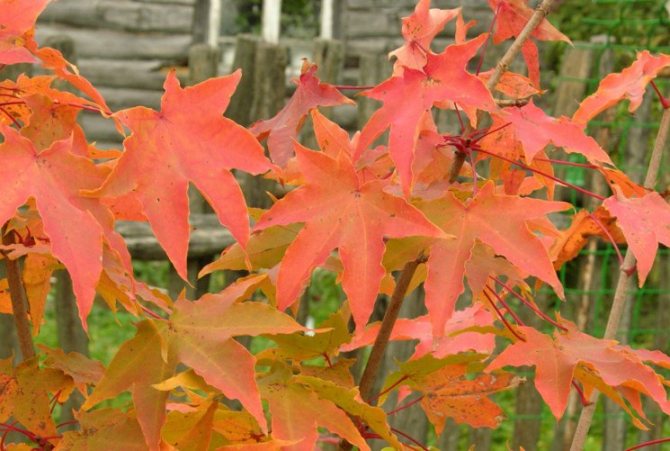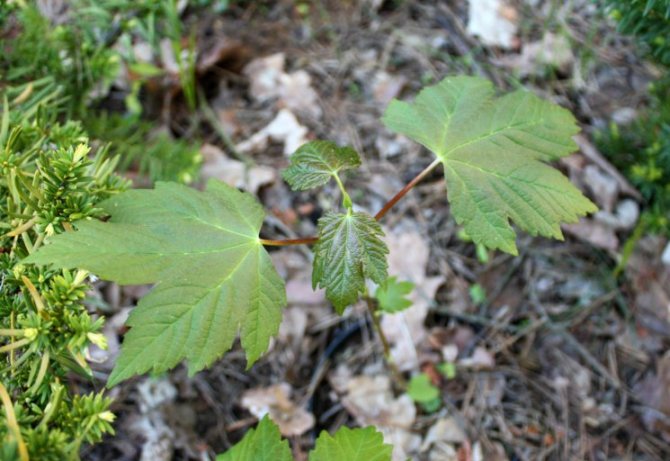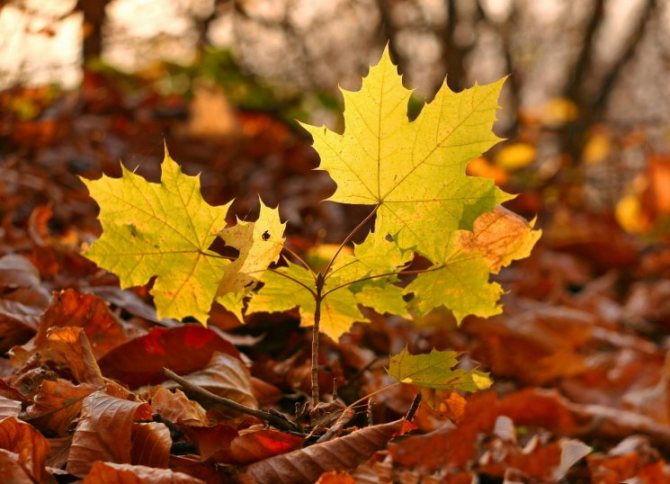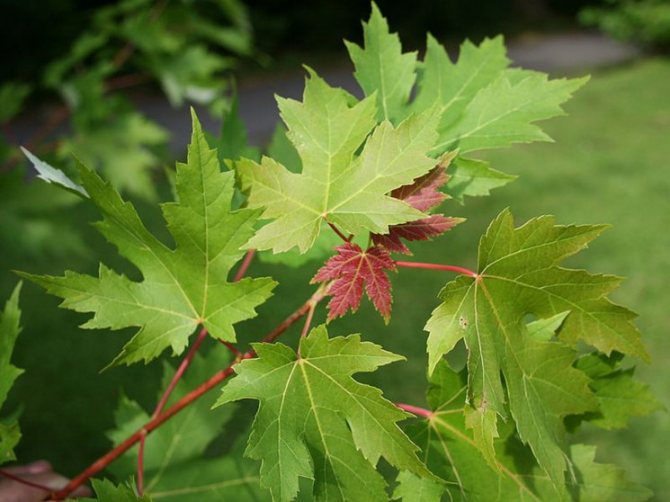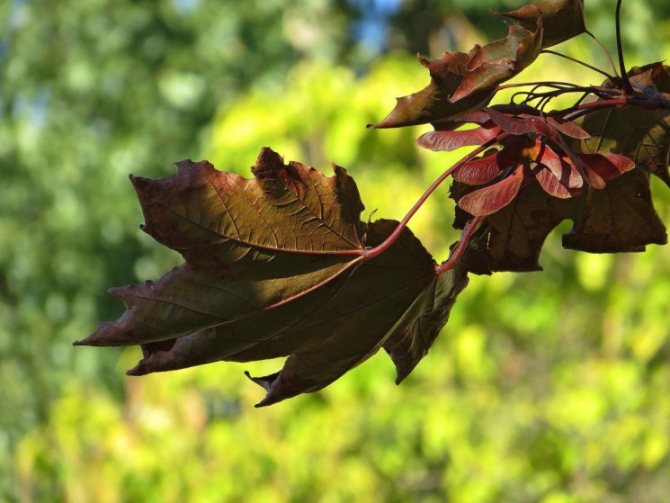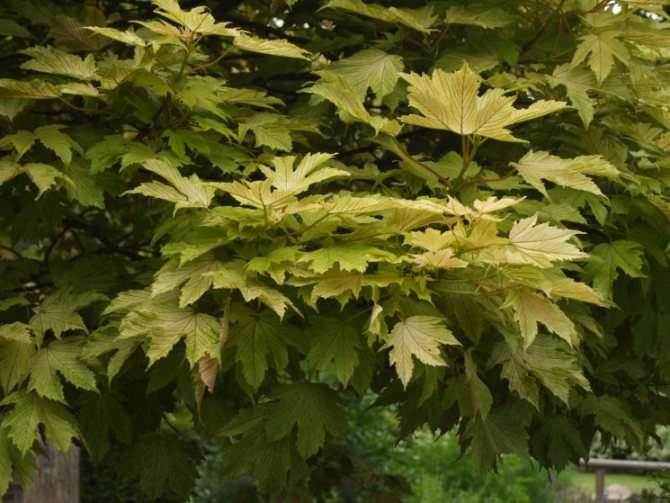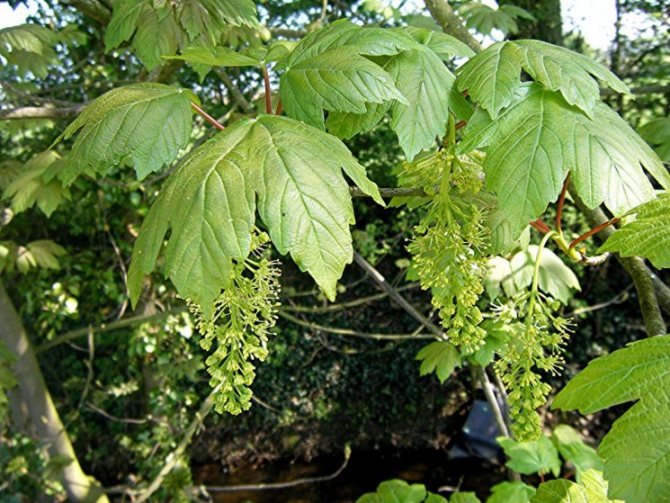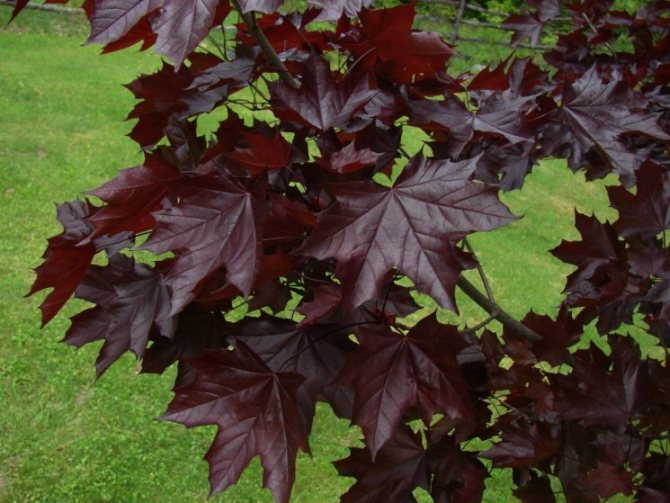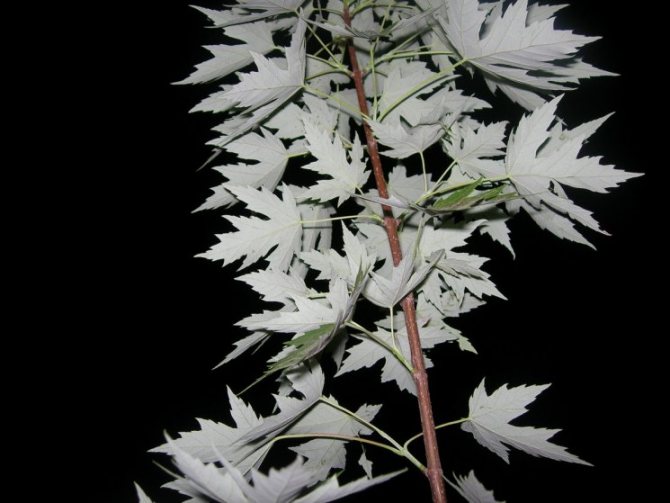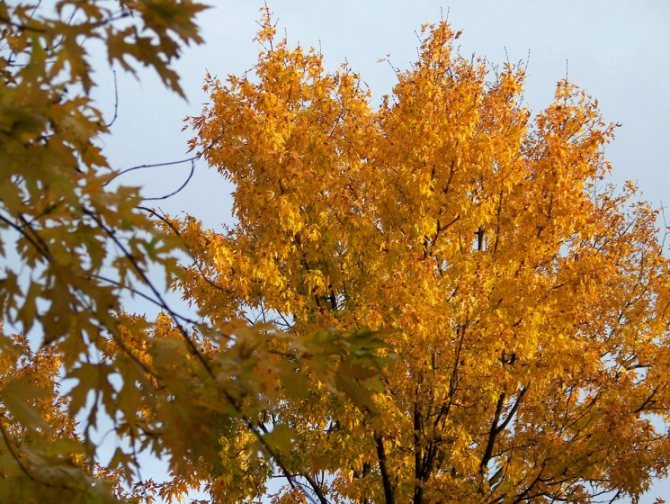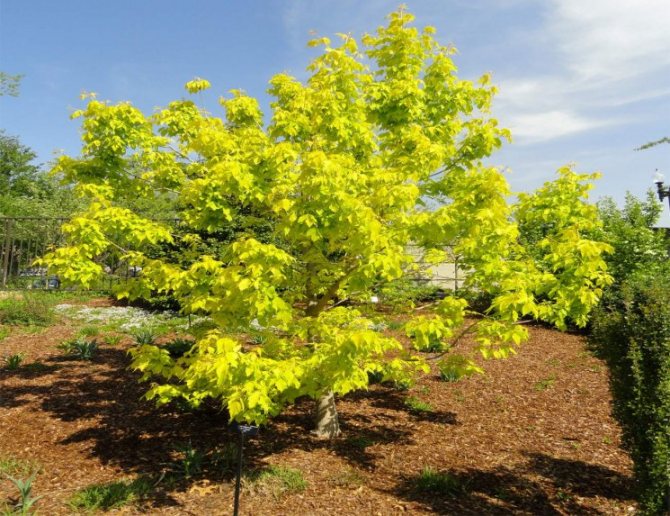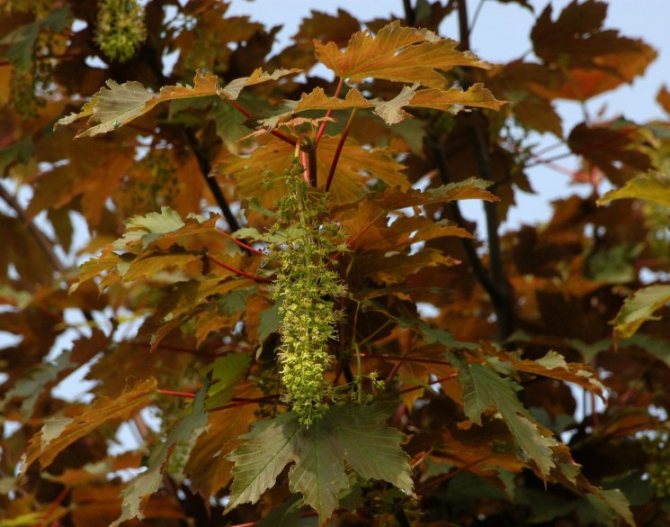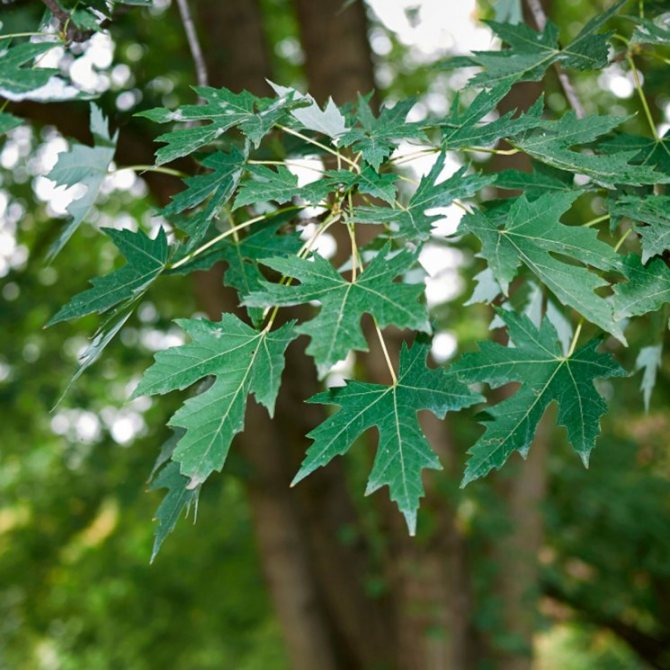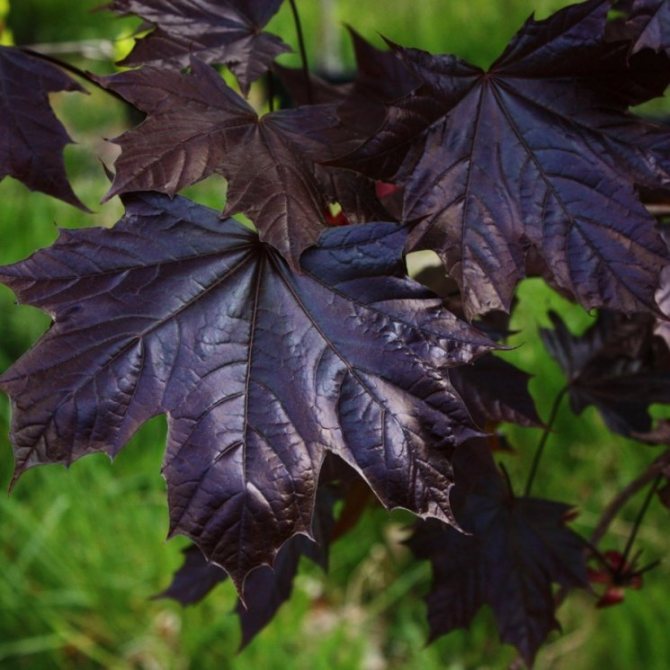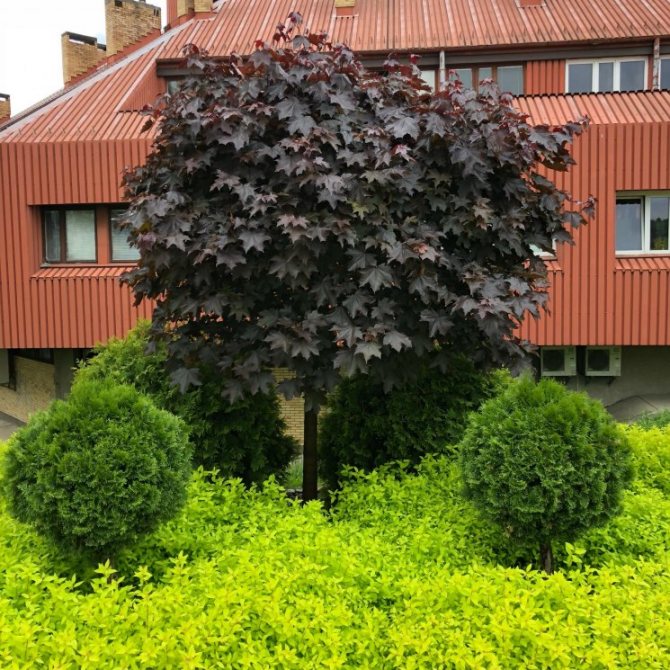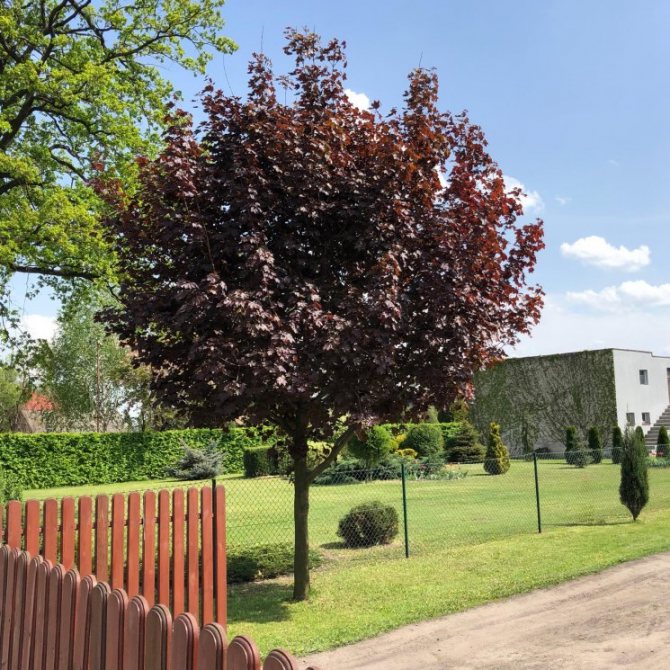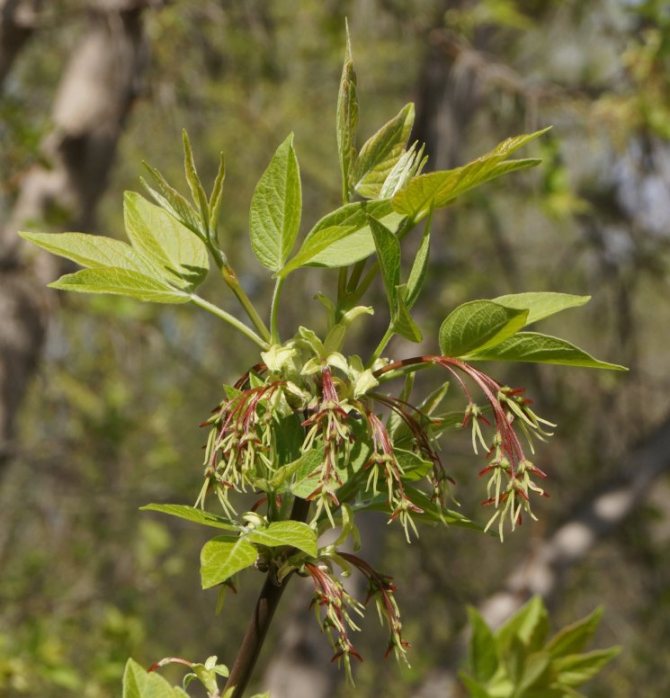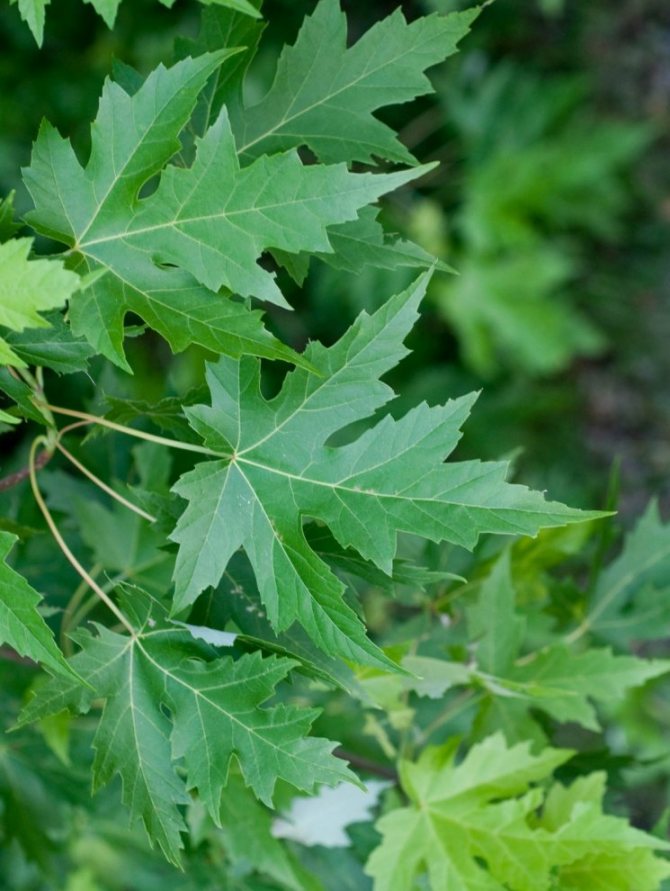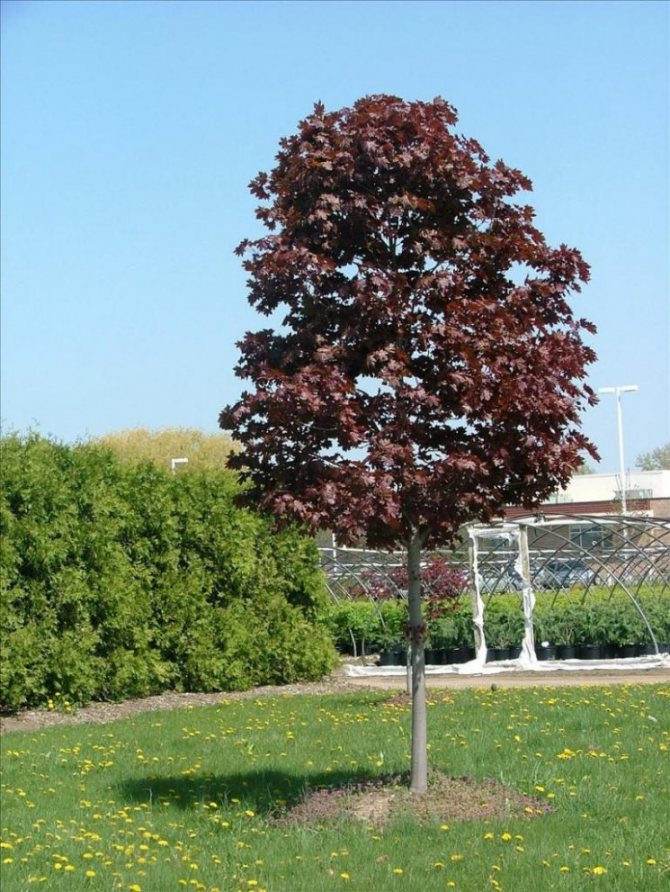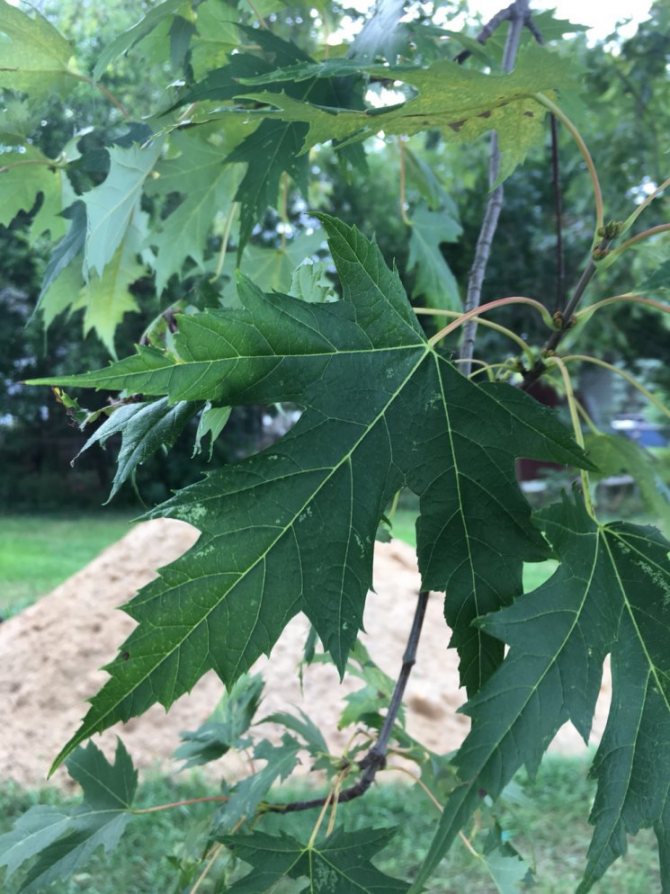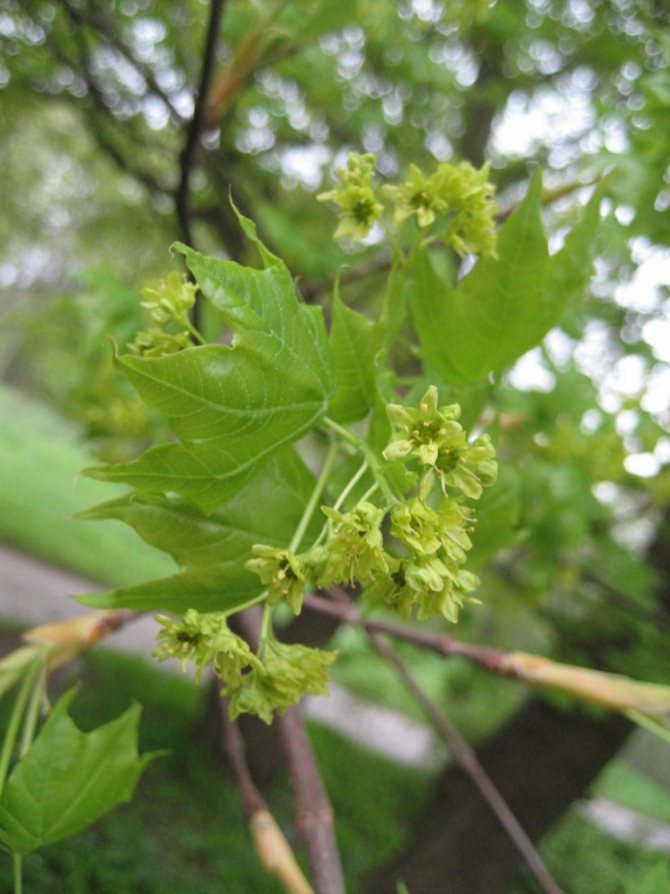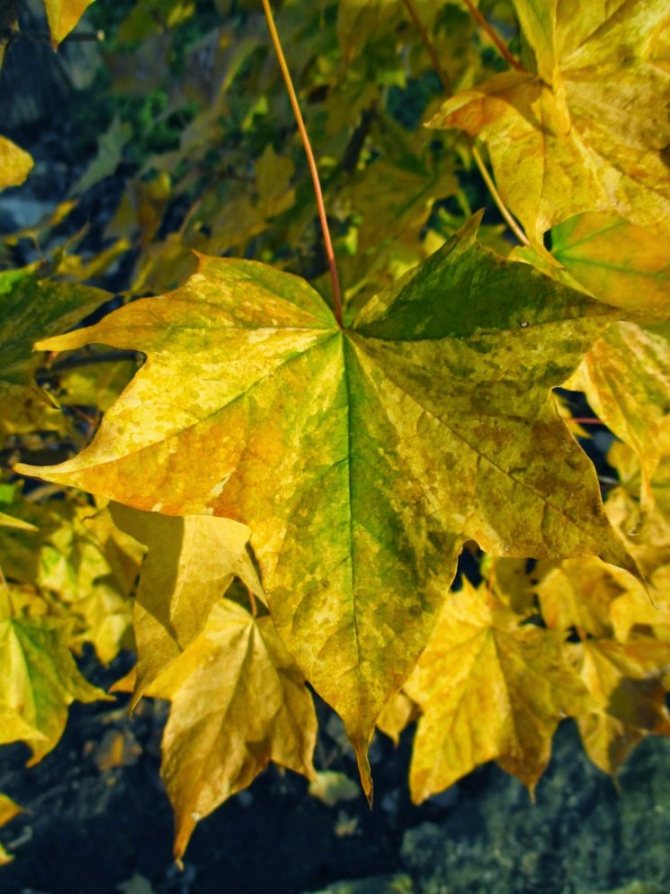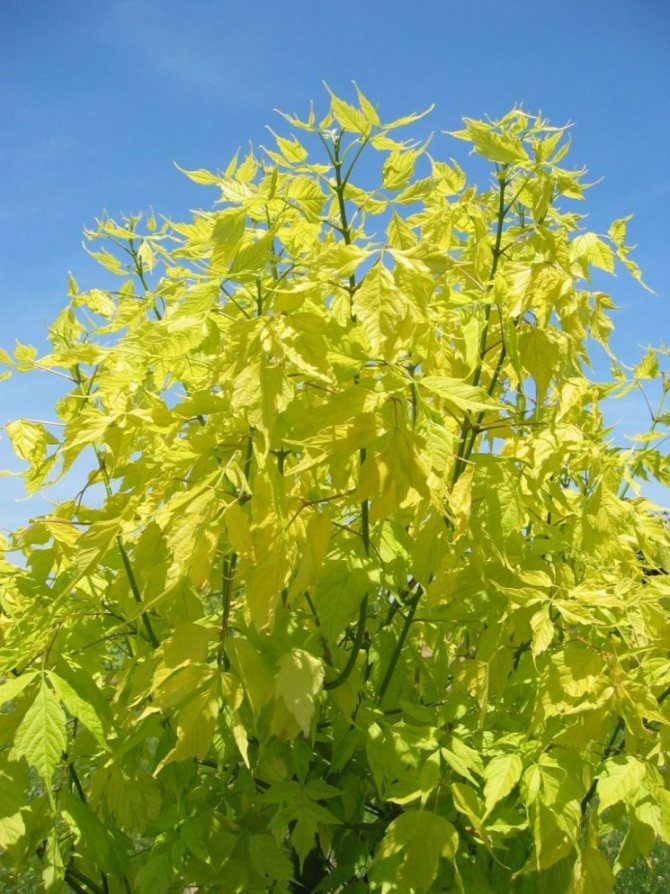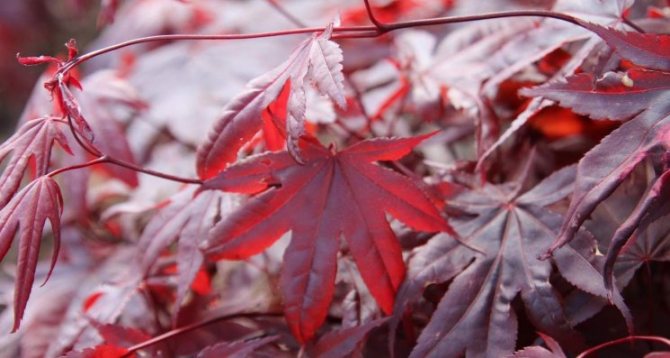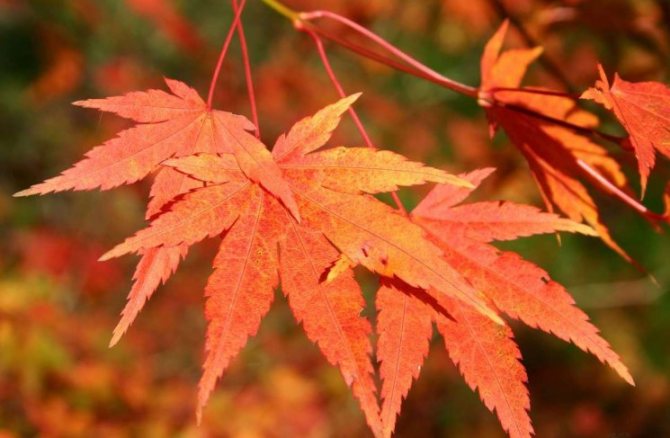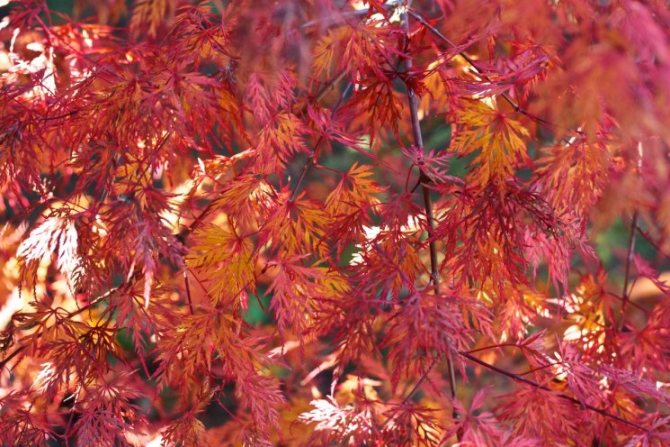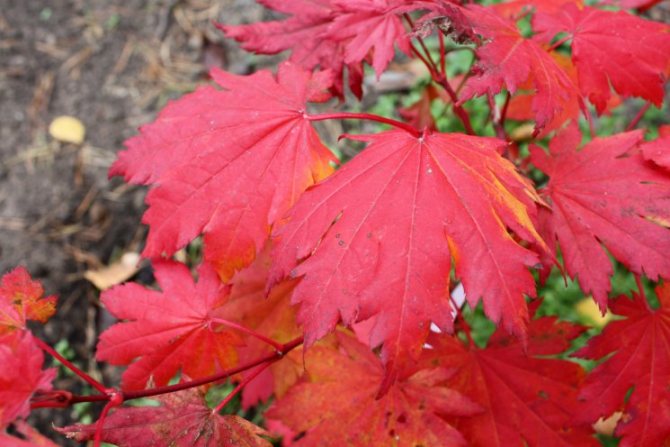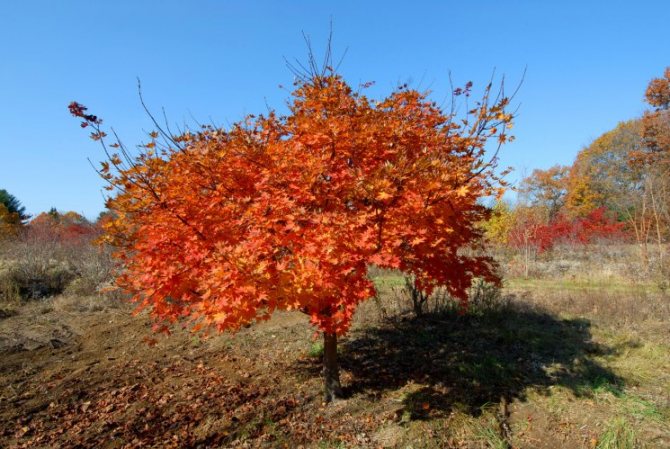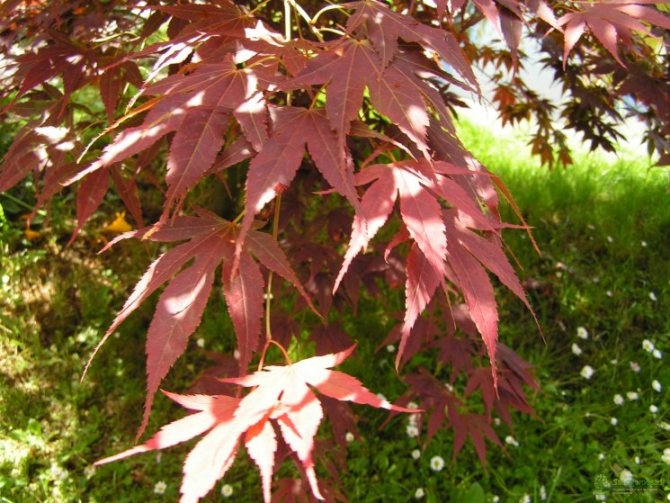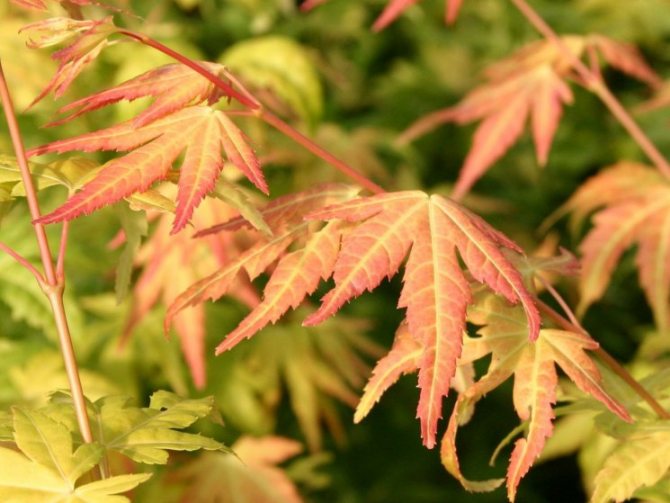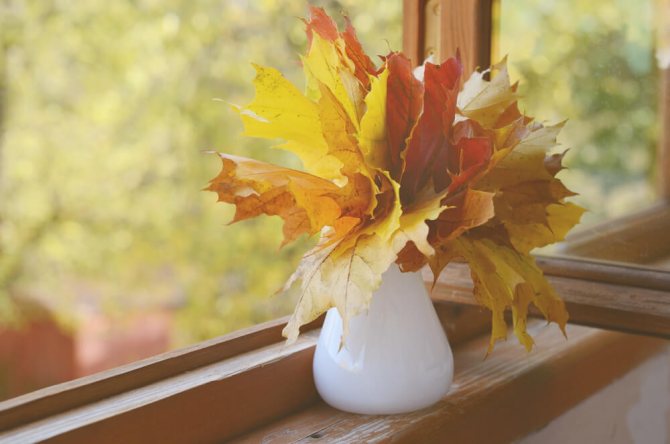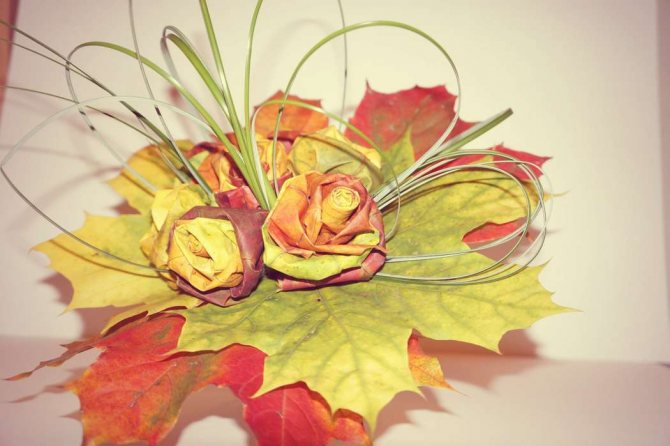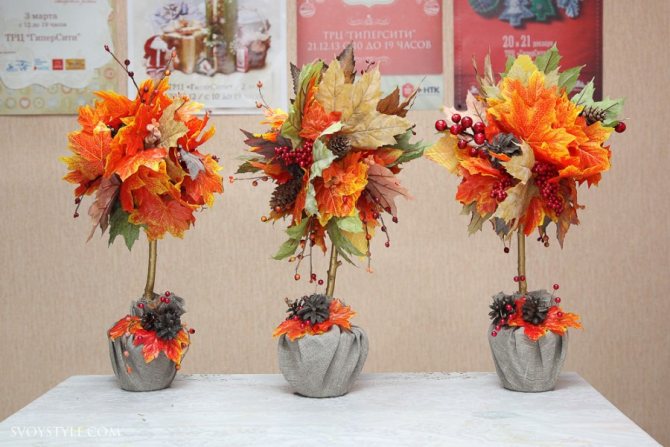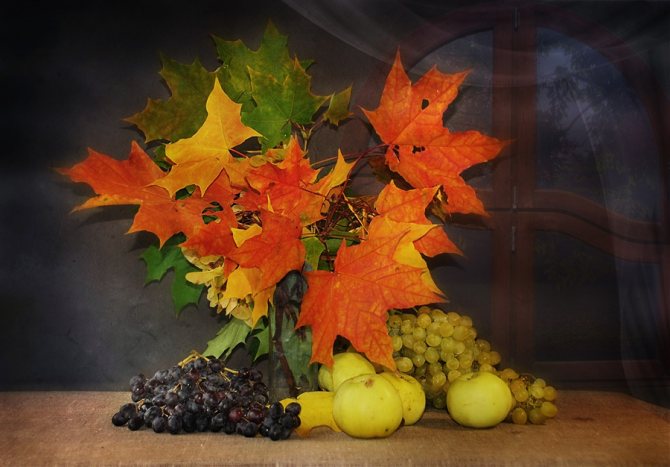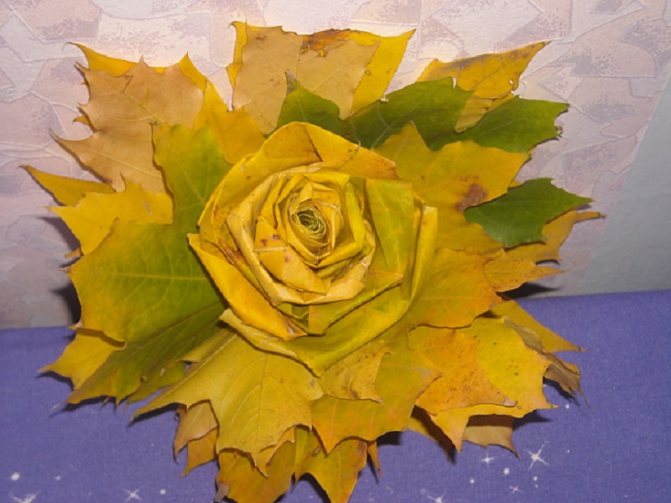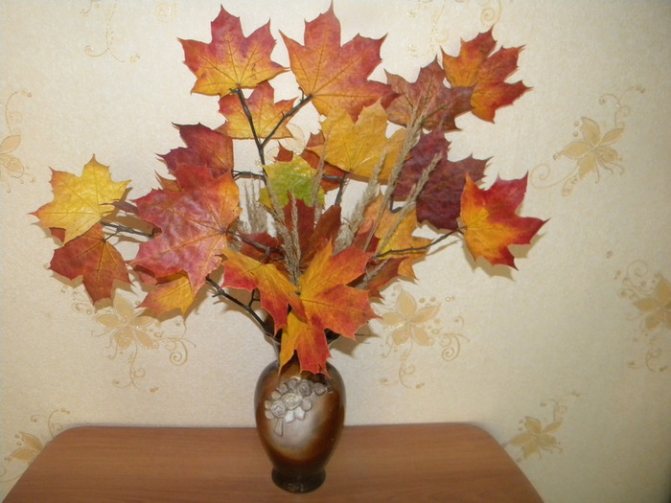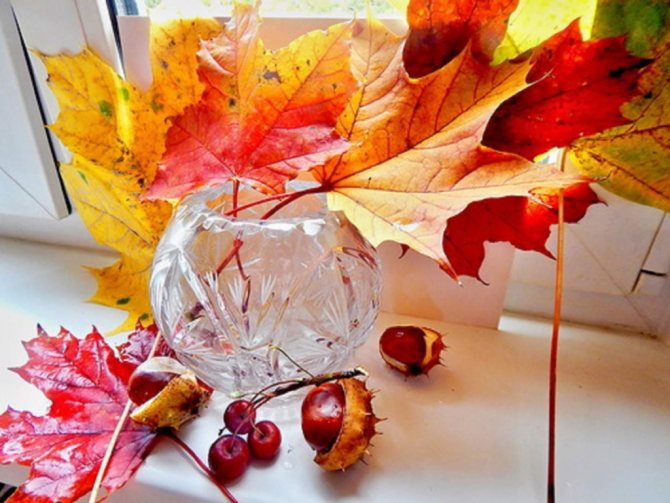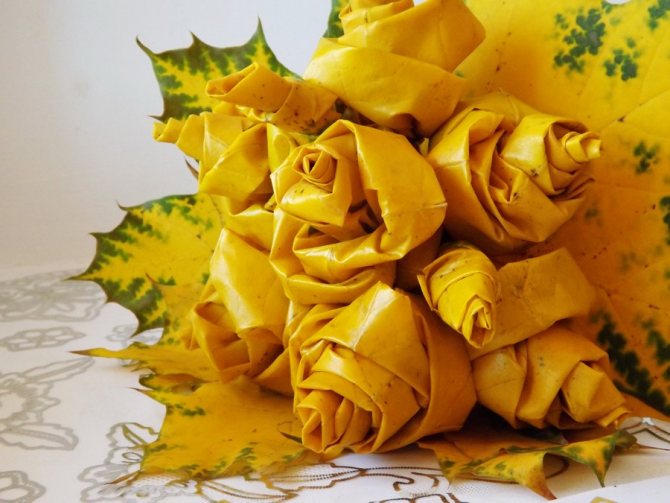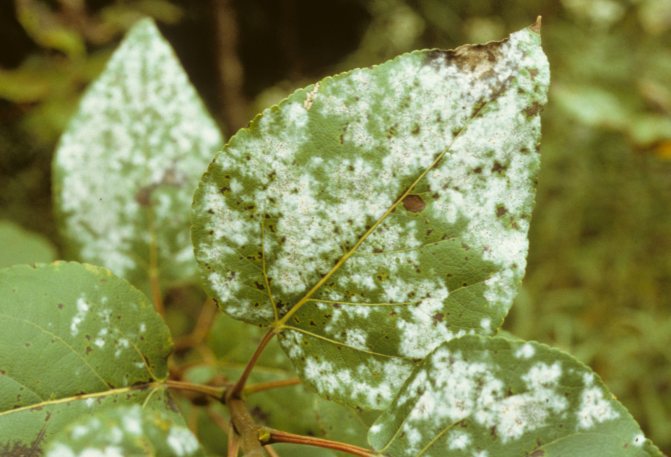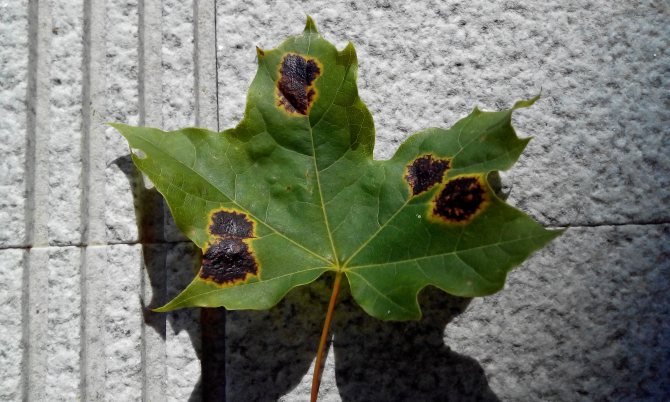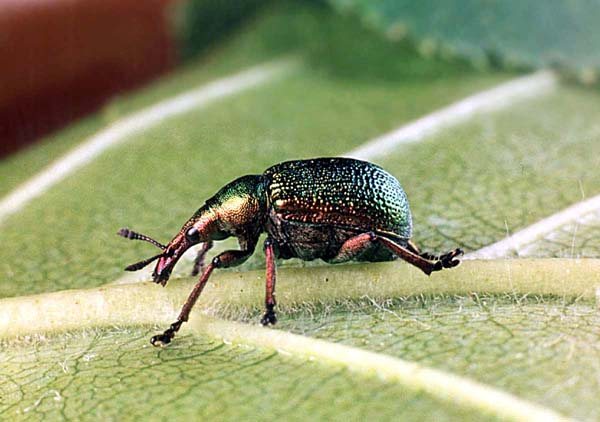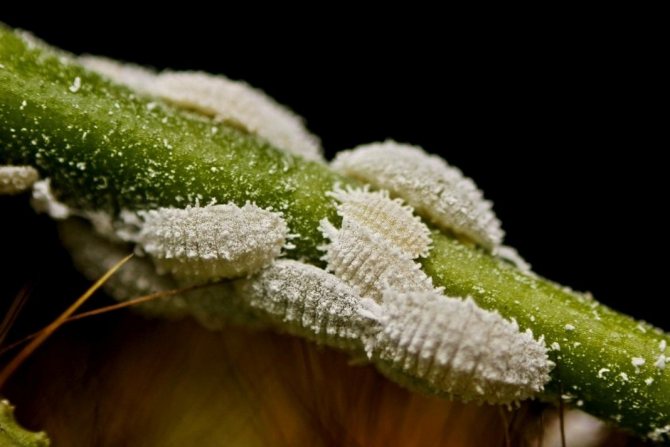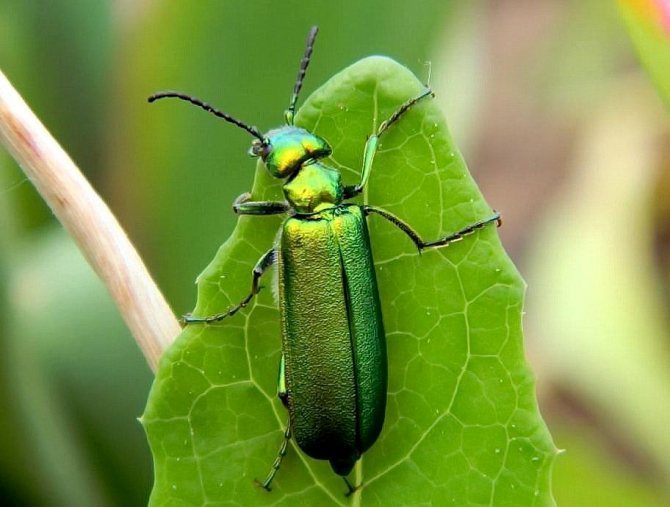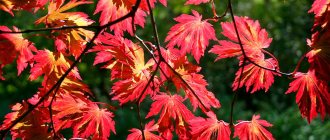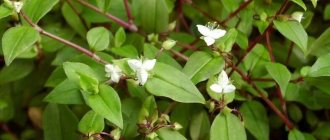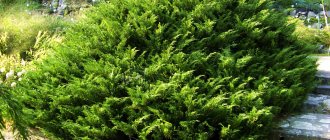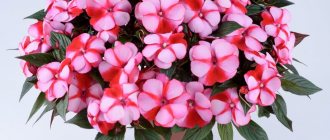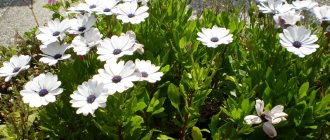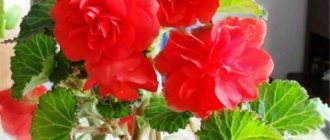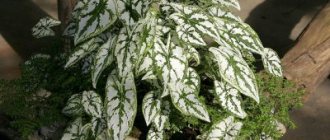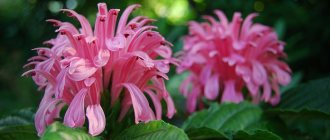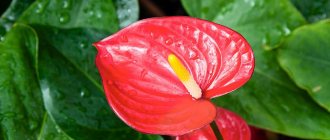This magnificent tree, beautiful at any time of the year, is a true decoration of city gardens, parks and squares. In autumn, maple leaves acquire a variety of colors and shades: from the usual yellow to deep crimson.
This tree, with its beauty, inspired world famous masters to create paintings, poets wrote poems about it. In this article, we invite you to learn a little more about this plant, which may be in your city. How to grow a maple tree from seeds, and is it possible? How to care for him if you have planted a tree on the territory of your country house?
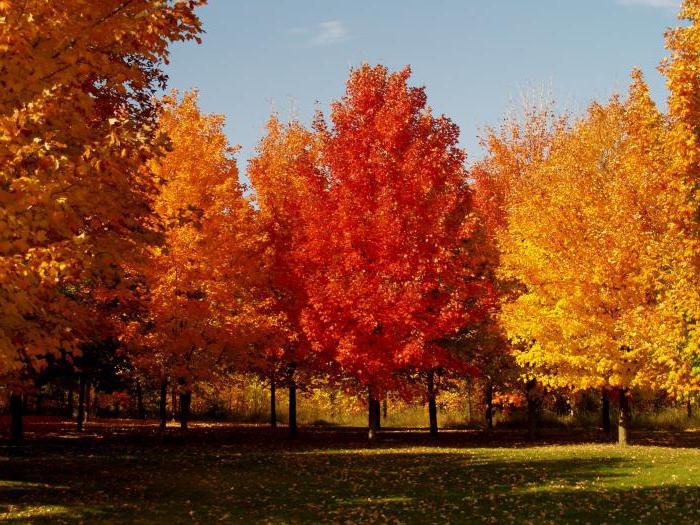
Can all types of maple be grown from seeds?
There are about 150 forms of maple in the world. Therefore, you first need to decide what kind of tree you want to cultivate. Most varieties are native to North America. The most valuable variety is recognized as sugar maple, found in the east of Canada, as well as in the area of the Great Laurentian Lakes.
Most ornamental varieties are propagated by cuttings or by grafting, and only a few varieties are ideal for planting by seeds. The exception is the American maple, which grows and reproduces everywhere. however, due to the massive accumulation of parasitic butterflies on it, this tree is recognized as quarantine in a number of countries.
So, the following types are suitable for growing by seeds:
- holly;
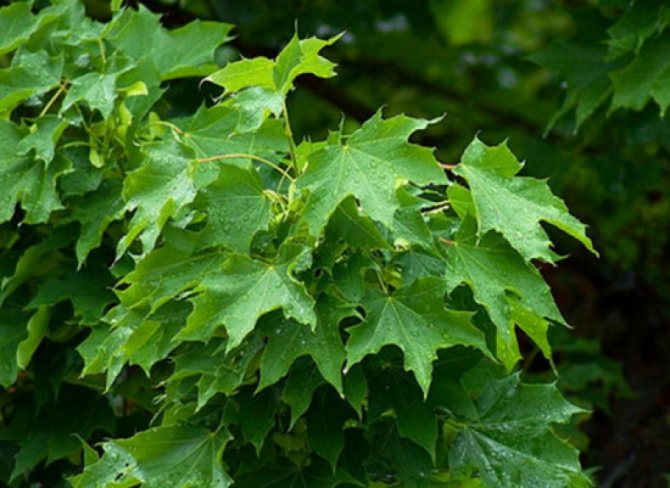

- Ginnala;
- green-barked;
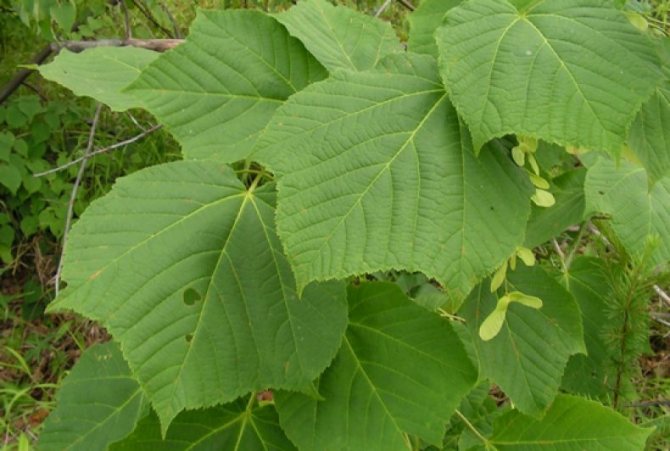

- Tatar.
You can easily find maple achenes in the fall forest in a pile of crumbling leaves under the trees. In order not to get confused in the search for future planting material, you need to have an idea of the appearance of the seeds. These are flat double lionfish. The fruit consists of two parts, each of which contains one bare seed with a large green bud. The plant bears fruit annually and in abundance.
Description
The genus Acer unites woody and shrubby plants of the Sapindaceae family. Widely represented in Europe, North America and Asia. The genus has more than one hundred and fifty species, which mainly grow in the temperate zone, some of its representatives are found in Central Asia and the Mediterranean.
The tree grows up to thirty meters in height. The trunk is covered with gray-green bark with a network of lighter veins. The leaves are large, three-lobed, up to seventeen centimeters long. The edge of the leaf plate is finely toothed. Flowers are small, greenish in color. They have five oblong sepals and the same number of oval petals. There are eight non-pubescent stamens. The ovary is short, and underdeveloped in male flowers. The pedicel is thin, about five millimeters long.
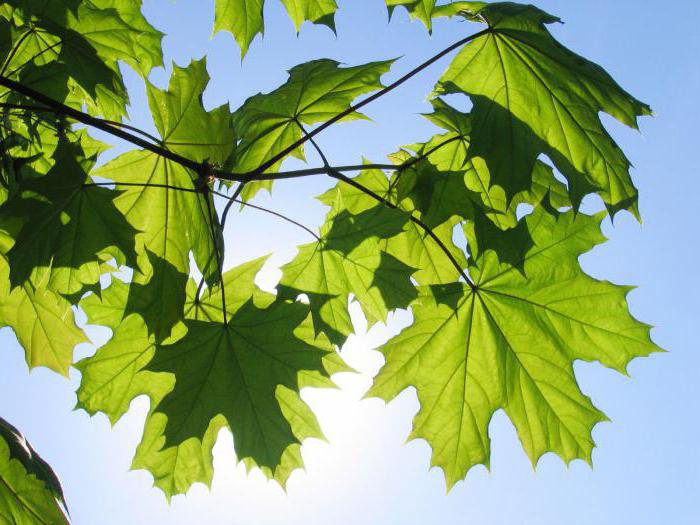

Choosing a place on the site
Next, you should decide on the site, where do you plan to plant this amazing plant. The most suitable habitat for maple seedlings is open sunny areas. In the absence of an illuminated area in the first years of the life of a maple, a slight partial shade is permissible.
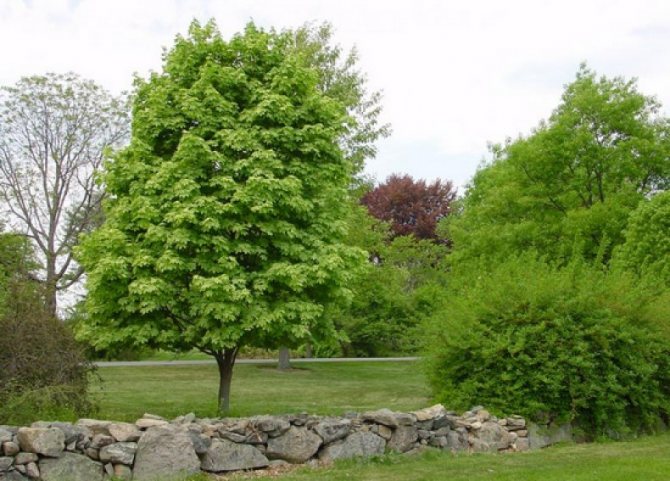

As for the soil, it is preferable that it be fertile and loose. Therefore, before planting, the soil should be loosened, making it homogeneous. In addition, it is recommended to fertilize the garden soil with a small amount of a mixture of sand, peat and humus.
If groundwater flows near your garden plot, then a 10-20 cm layer of sand drainage must be laid on the bottom of the planting pit, crushed stone or expanded clay approximately 15 cm thick. Drainage will significantly improve the drainage of unnecessary liquid.
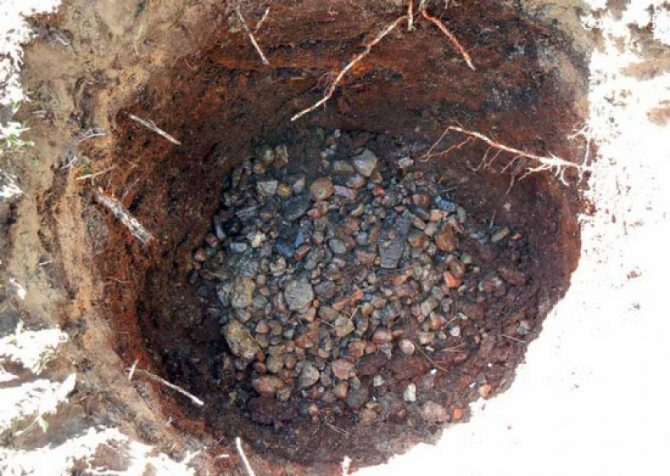

Maple leaf photo
Please repost
1+
1
Seed stratification
Under natural conditions, maple seeds ripen in August, fall off in the fall, and begin to sprout in the spring. Based on these natural cycles, stratification should be carried out. Consider the nuances of cold and combined techniques.
Cold
Stratification procedure ("Stratification") allows you to achieve rapid germination of planting raw materials. The meaning of the cold method is to maintain the hibernation phase in an unnatural environment, after which the plant begins to grow actively in nature. The method is suitable for most varieties of maple. American, Norwegian, Japanese, large-leaved, sugar and some red species hibernate in winter and sprout with the arrival of warmth.
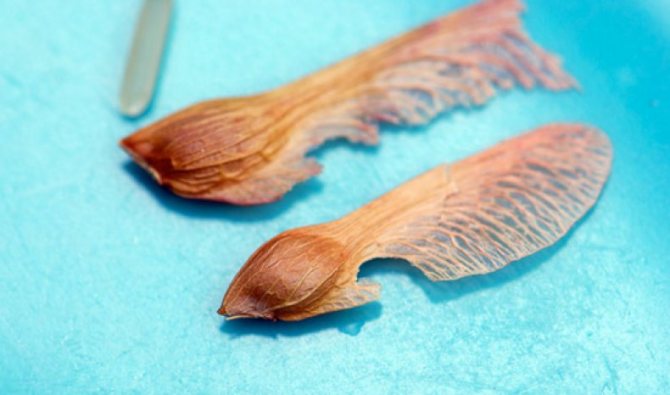

All of the above grains are placed in the ground in the fall or December. If lionfish fall off your tree in spring or June, germination should be done in the ground. If you plan to sow grains in the open field, use the cold method 90-120 days before the severe cold weather recedes.
So, let's get down to cold "peeling":
- Place a handful of peat moss and vermiculite in small plastic zippered bags. To prevent the penetration of fungus, do it with disposable gloves and use only sterile clean material.
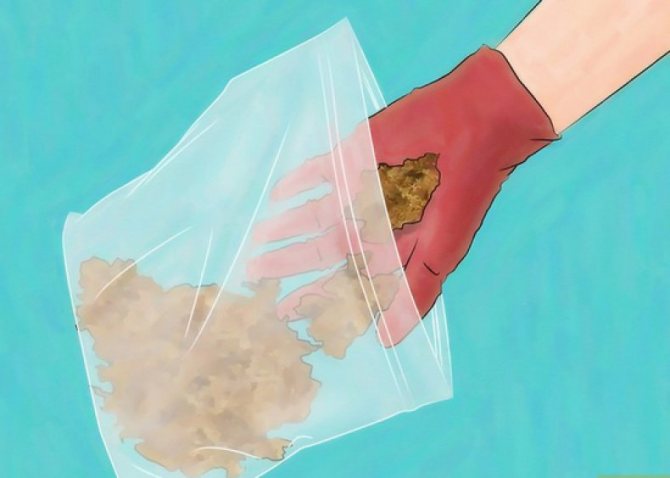

- To slightly moisten the planting material, pour in a few drops of water.
- You can add a little fungicide if you like. This will protect the seeds from mold damage. So that the seedlings do not suffer from an overdose of the fungicide, add very little of this substance.
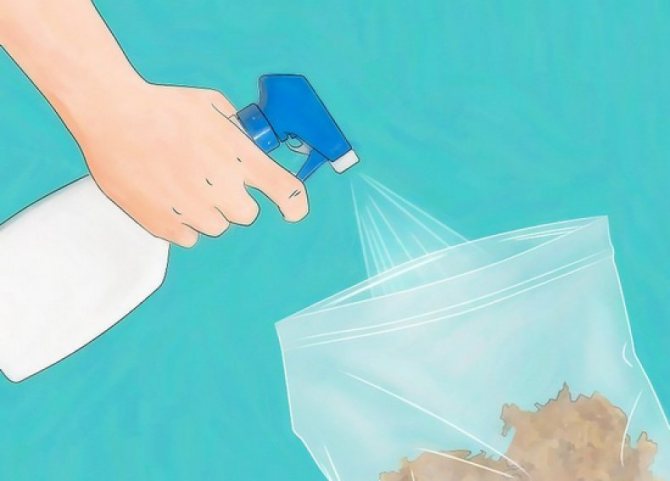

- Distribute the seeds into bags (20-30 samples each). In order to maximize air removal from the bag, carefully smooth it with your palms. Seal the bags carefully.
- We have come to the moment of direct seed stratification. For this purpose, the seeds must be kept in the refrigerator at a temperature of 1-5 ° C. It is this temperature that promotes the germination of seeds of most species.
- Check the bags every 8-15 days for condensation, mold or other undesirable phenomena.
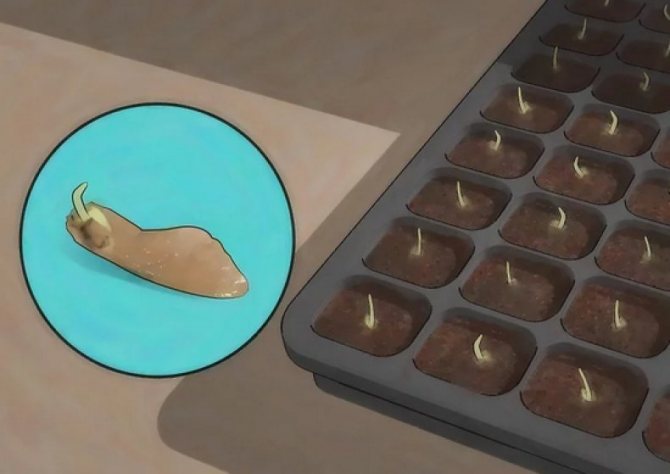

- Keep the bags in the refrigerator for 40-120 days. Most varieties take 90 to 120 days to germinate. The germination period of seeds for 40 days is a rarity - this is characteristic only of large-leaved and some other forms.
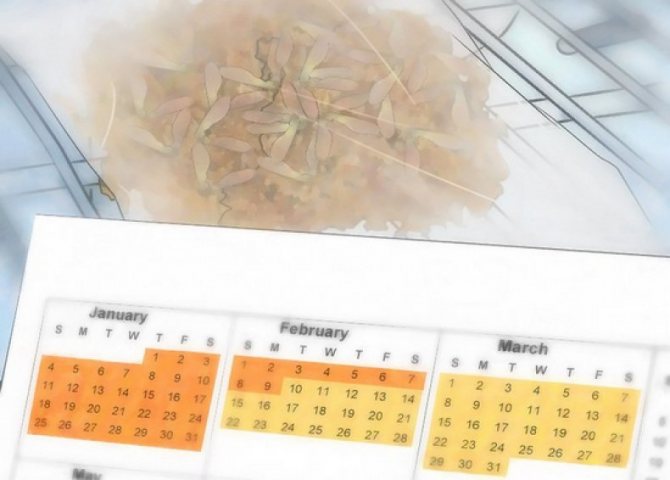

- As soon as the grains begin to sprout, remove the bags from the refrigerator.
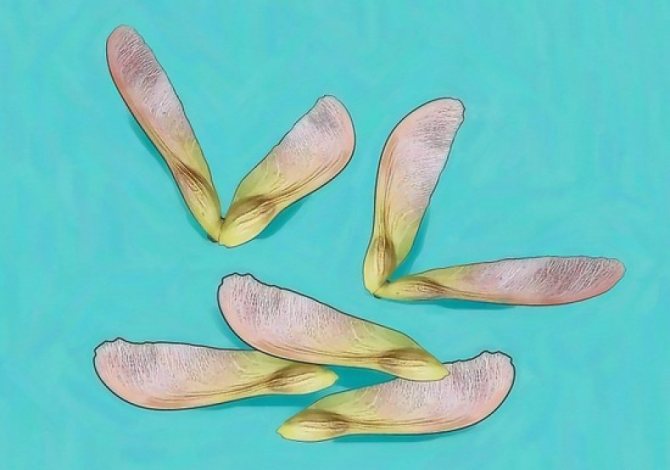

Warm and cold
For grains that are especially difficult to germinate, the method of combined (warm and cold) "stratification" is used. The essence of the method consists in exposing the planting material to alternately warm and low temperatures. This technology is required for mountain and Asian varieties. The papery, curled and striped varieties are difficult to sprout and need extra care. This also applies to most other varieties from Asia, as well as rocky and mountain wood. All grains of this group ripen in the autumn or winter season. By simply remaining in the ground, seeds can only germinate after years.
Many of the listed varieties have a very tough pericarp (shell) that requires some processing. Professional gardeners often make "incisions" in the pericarp, which greatly enhances shoot growth. It will also help to treat the base of the seeds (opposite the wing) with a small file (stop immediately as soon as you reach the base, slightly opening the shell).In addition, it is practiced to soak the planting raw materials in hydrogen peroxide for several hours, after which they are well washed. Or you can soak lionfish in warm water for a day.
Features of Norway maple
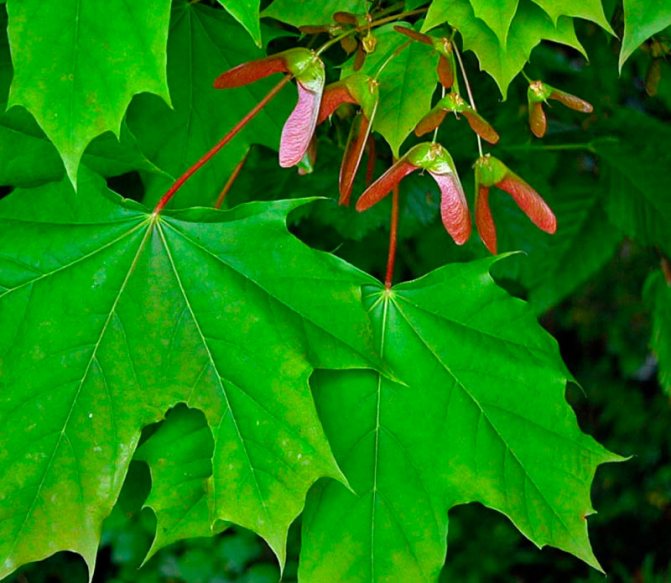

Norway maple has a height of about 30 meters, sometimes even higher. The surface of the trunk is covered with fissured bark of a gray-brownish, almost black color. The bark on young branches is gray-red and relatively smooth. The shape of the crown is round. The branches are powerful, wide, they are directed downward. Simple palm-shaped leaf plates are oppositely located, coarse-toothed blades (sometimes from 5 to 7 pieces) have a pointed end at the ends. The front of the foliage is dark green and the back is light green. In autumn, the leaf plates acquire an orange or yellow color. If you break the petioles or veins at the leaves, then a milk-colored juice will appear at the site of damage. Flowering is observed in the first half of May. The scutellum inflorescences consist of 15-30 fragrant flowers, colored greenish-yellow. Such a tree belongs to dioecious plants, so there can be either male or female flowers on it. Pollination is due to insects. The nectary has the form of a flat ring, the bases of the stamens are immersed in it. It is placed between the petals and the ovary. The fruit is a lionfish that splits into 2 single-seeded fruitlets. Fruit ripening occurs in the last days of summer, while they can remain on the branches until the end of the winter period. Norway maple is a good honey plant.
Such a tree is outwardly similar to another species, namely, sugar maple or Canadian maple. These plants can be easily distinguished by the color of the sap that stands out from the petioles, for example, in the sugar maple it is transparent. Also, the Norway maple does not have such a rough and rough bark as the sugar maple, and in autumn its leaf plates acquire a less bright color. In the Norway maple, the shape of the leaf plates is more flattering. The buds of the Norway maple are light red, while the buds of the sugar maple are deep green.
The optimal maple variety for bonsai
Bonsai is a plant species that is widespread in Japanese culture. To create such a miracle at home, you must, first of all, start trimming the crown so that it takes on the correct shape. Subsequently, you need to work with the root system. The bonsai tree can be grown from bamboo, cherry blossom, lemon and pine. But the most amazing piece will be the red maple bonsai. Most of the plants belong to the category of evergreens, only sakura pleases with its beautiful color in the spring. Unlike the rest, maple has leaves with variegated, bright shades. This plant will be a wonderful decoration for any home and will not leave anyone indifferent.
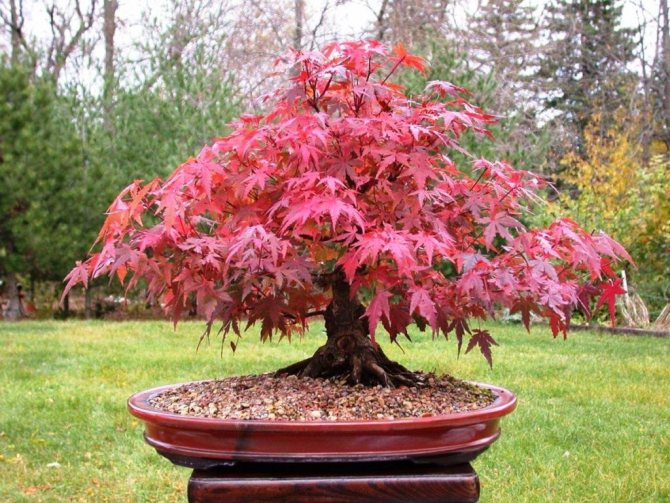

To get the desired result from maple, you need to be very serious about choosing a variety. The most suitable varieties are considered to be:
- palm-shaped;
- ash-leaved;
- sycamore;
- field;
- rocky.
These specimens, due to their small size and small leaves, will be in perfect harmony with other representatives from the bonsai composition. Currently, the art of decorating living home masterpieces has gained a large scale and is constantly being improved. If you wished to have such beauty at home, then just go to a specialized store and buy blue maple bonsai, purple, Japanese red. They will perfectly fit into any interior.
Growing options
You can grow small trees using the following forms:
The composition at home can be grown using seed material or using cuttings, giving it any shape.One has only to study in detail the principle of operation, do everything consistently and correctly, without missing important nuances.
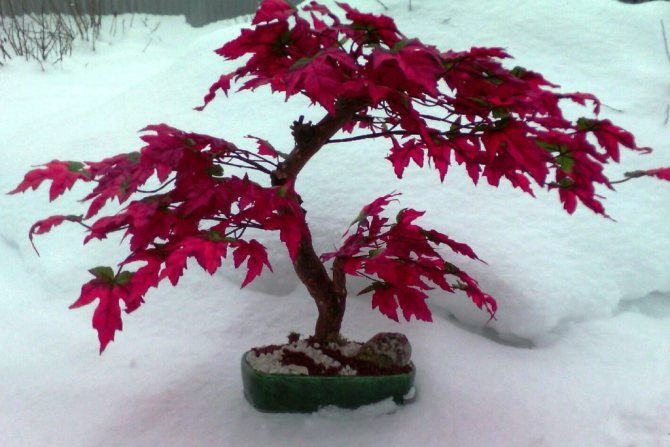

Interesting facts about maples
Maple often seems monotonous, and no one even thinks about its varieties. There are over 150 species of maple, and they are all located in the northern hemisphere.
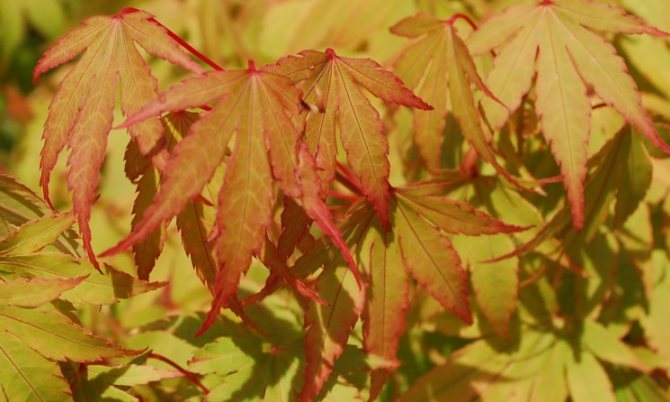

Maple is especially common in Europe, Asia, North America. A total of 25 species are scattered over the territory of the Russian Federation.
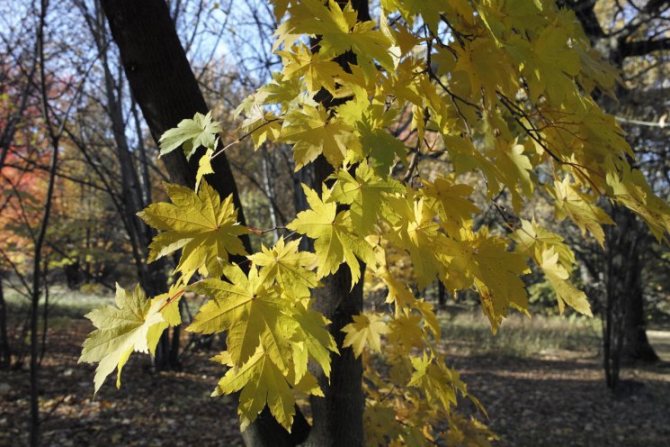

Most maples shed their leaves in the fall, but there is one type of evergreen maple found in the tropics. Most trees grow from 10 m in height, but there are also species that are shrubs with many shoots.
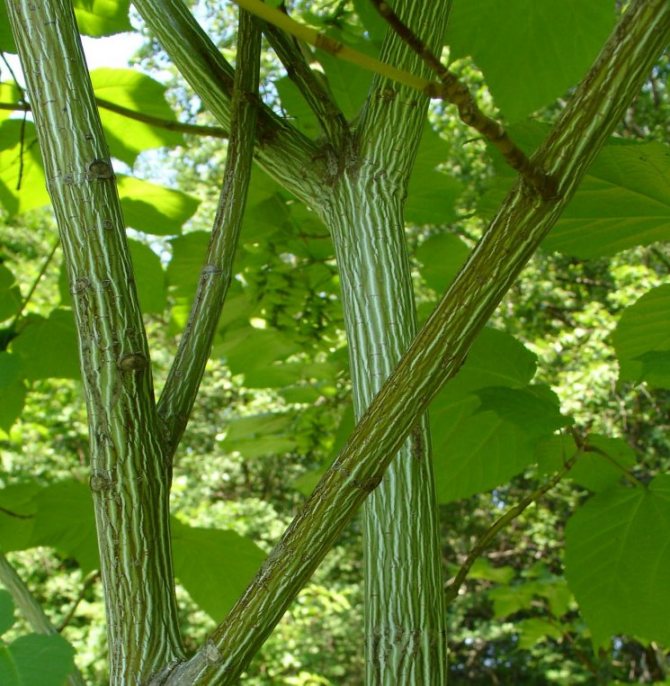

Maples mainly differ in leaves, they are wider and narrower, of different shades and colors.
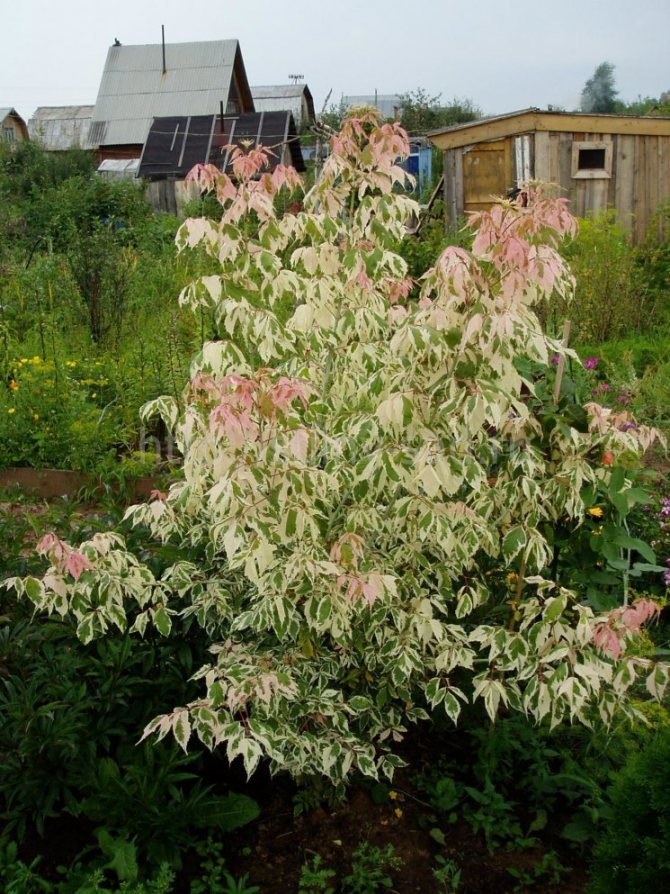

Maple bonsai growing rules
This is a rather capricious tree and its growth and development can be badly affected by a negative external environment. It is already accustomed to the climate of central Russia. But his place of permanent residence should be treated very carefully. Fan and far-sighted varieties are preferred, but they may have problems due to:
- the presence of direct sunlight;
- constant drafts and wind;
- poor lighting.
If there is a choice between the shadow and the sun, then it is better to choose the latter. Although with such a neighborhood, the leaves will become smaller, but there is no need to remove the buds, thereby weakening the tree. And the color of the leaves in the sun will be much richer and brighter. In summer, red maple bonsai can be taken outside, provided that the pot is installed in a place where there are no gusts of wind. Otherwise, the cut root system will not allow the tree to resist in a strong wind, and it will fall out of the pot.
Helpful information. If maples are installed in a poorly ventilated room, where the temperature is low, high humidity, then they can be affected by diseases such as harmful fungi, powdery mildew and anthracnose.
It is worth paying great attention to watering this plant. During a hot season, the frequency of watering and the volume of water increases. In winter, when the leaves were crumbling and the maple fell asleep, it does not need excessive moisture.
With the onset of spring, maple should be fed with special formulations containing iron. This nuance must be taken into account in the manufacture of the substrate. Maple bonsai prefers to grow in a nutritious and aerated soil mixture with a slightly acidic or neutral environment. In addition to the usual components, a special clay substrate must be added to the soil, which will provide good strengthening of the roots and change the structure of the earth.
The process of transplanting and choosing a new pot falls on the time of cutting the root system. This happens every 2 to 3 years. Roots are not only formed, but damaged or dried out areas are also removed. They are also cleared of adhering earth.
Emergence of seedlings
The first shoots will appear about three weeks after planting. Maple germinates rather slowly, but when the seeds have sprouted, they need simple care: regular moderate watering, weeding the soil. In strong summer heat, shade young plants from the sun's rays. By the fall, your seedlings will already grow up to 40 cm, and in the first year - up to 80 cm.
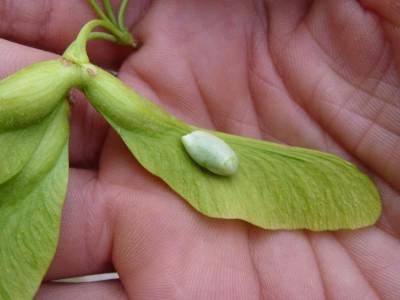

Using seedlings to propagate Japanese red maple
If you propagate Japanese maple by seeds, you can lose decorative qualities. Therefore, the main way of propagation of this plant is cuttings. They also use vaccinations and mutations. There are species of this plant that grow exclusively in Japan. If a resident of another region wishes to have the same tree at home, then it is best to grow it from a seedling.
The choice of Japanese maple seedlings must be approached with special care. Any oversight can lead to a negative result.And since this plant is a curiosity on the territory of our country, its cost is quite significant. Therefore, you need to consider the following points:
- Choose the right look. If you have a lot of free space, you can give preference to varieties that are high enough, which include Shirasawa and Orange Dream. If you need to decorate a small garden, terrace, hall, then there is no better option than a small maple bonsai. Katsura and Mikawa yatsubusa will also work.
- Pay attention to those seedlings that are sold in containers. This will help avoid difficulties with rooting, since if you want to plant a plant in a new pot, then this can be done by pulling out a seedling with a clod of earth in which it is previously located. With such actions, you can save the root system safe and sound.
- It is worth asking about the age of the tree. A one-year-old seedling or a little younger is most suitable for planting. Mature plants are too moody and may not be able to transfer the transplant to a new container.
- Examine the tree carefully and make sure that it looks healthy, the leaves do not wither, there are no signs of rotting, and there are no damaged areas by insects.
Each variety of Japanese maple requires individual care. There are varieties that prefer abundant watering, and there are those that can die from an abundance of water. The fan maple grows well in the sun, and the palm maple prefers to stay in the shade. The fan maple has a small root system, so it can be planted in the garden next to other trees, buildings, fences, as long as the planting site is well lit. It is better not to fertilize the seedlings of this tree, because an excess of fertilizer can lead to the death of the seeds. Seed material can be planted in loose soil.
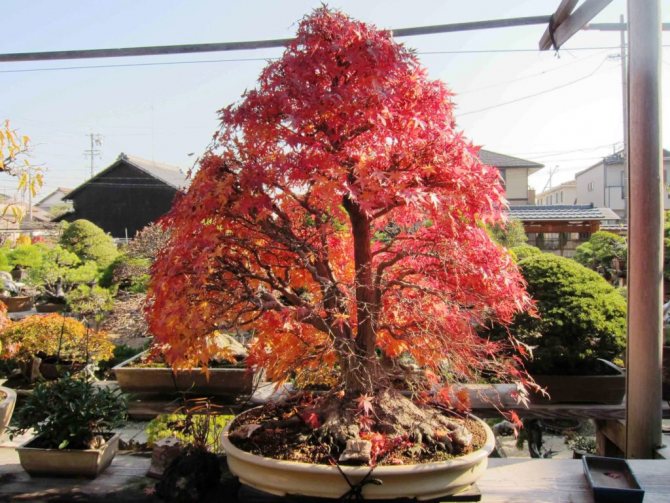

Majestic maple or velvety maple
Its name immediately speaks about the features of this species. The majestic maple is the tallest and largest of its kind. It grows about 20 m in height, and the average diameter of its trunk is 1-1.5 m.
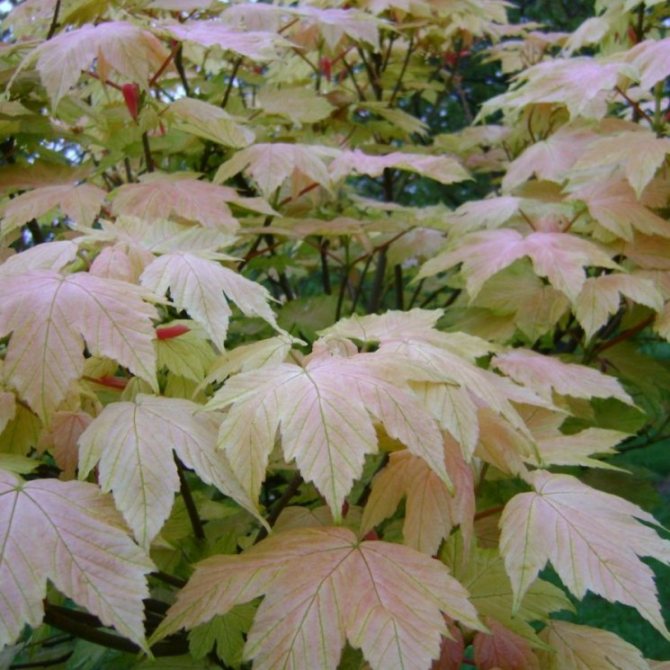

Its wide leaves and multi-panicle flowers really give it a majestic look when it blooms, and thanks to its abundance of greenery, it does a good job of handling carbon dioxide in the air.
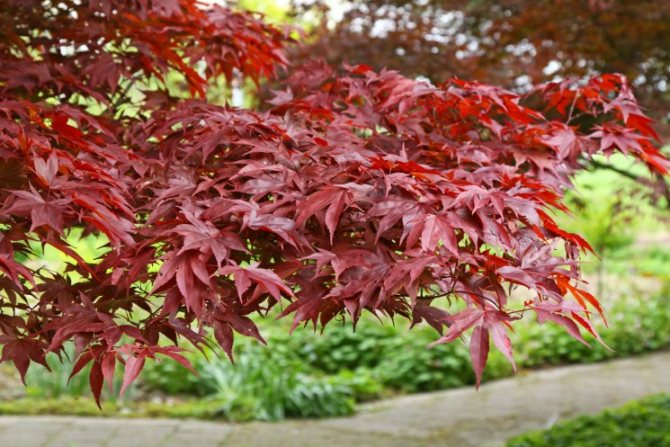

This species is planted in large cities in the alleys, as it greens the area and fights air pollution.
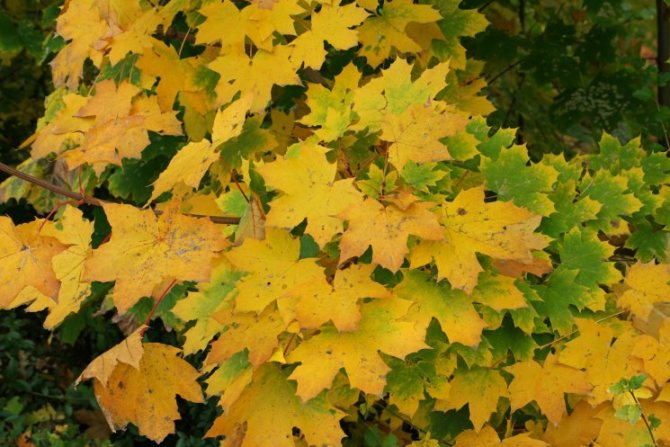

Propagation using cuttings
In order not to have problems with growing Japanese maple, you need to use a cutting of a tree for its propagation. Steps to be taken in this direction:
- With the onset of summer, a tree twig is harvested. They stop at the one they like best, on which the crust has not yet formed.
- Close to the base of the cutting, an annular incision is made in the skin and wood. Roots should appear at this place.
- An identical incision is made next, slightly higher than the previous one (by 3 cm).
- The bark and the hard part are removed between the incisions.
- The process of sprouting roots for subsequent planting is in progress.
- A special hormone is applied to the cut off site for the formation of roots. In terms of consistency, it can be either powder or gel.
- To accelerate the development of roots, sphagnum moss, previously moistened with water, is attached to the cut. All this is wrapped in plastic wrap and left in a cool, dark place.
- After the expiration of the crescent, young roots can be seen. Then the polyethylene can be removed.
There is another way for new roots to appear. The twig is inserted into a prepared container with compost and sand mixed together. The substance is pre-moistened.
Holly maple in landscape design
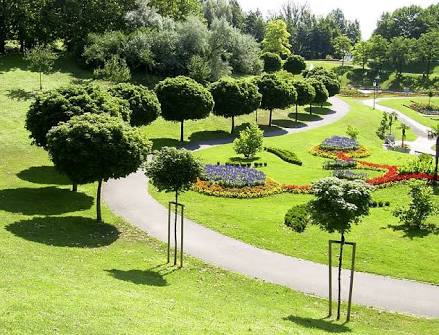

Large trees with foliage that have a variegated or rich color are quite popular among gardeners in countries such as Germany, England and Holland. And since the maple tree has a large number of varieties, gardeners have plenty to choose from. For example, if you decorate the slope of a mountain or ravine with such trees with foliage of yellow, purple or variegated color, then it will look like a decoration for a fairy tale.
If there is a desire to decorate a garden or a summer cottage, then it is better to choose the Crimson King variety. Even one such tree will make your site unusually colorful, and if you compose with it a composition with other shrubs and trees, you can make your garden or cottage uniquely beautiful. Of course, to compose a successful composition, certain knowledge will be required, since it will be necessary to take into account the color compatibility of plants and their future size. However, the end result is undoubtedly worth the effort.
Seedling by shoots
To carry out this procedure, you will need a pot in which drainage holes are necessarily present. Rounded pebbles are laid in it, soil is filled up, which includes 4 parts of crushed bark and 1 part of peat. The amount of soil is determined independently, but it must be sufficient to fix the tree. On the shoot, carefully peel off the thin bark so as not to violate the integrity of the root system. The exposed area is placed in the ground.
Recommendations of specialists. A small amount of sphagnum moss can be added to the soil. It will not only become a fertilizer, but also soften hard water, which will favorably affect the development of the plant's root system. So that the tree in the pot does not stagger, a wooden peg is stuck into the container and a young plant is tied to it.
For seedlings, cuttings are used only in cases where the street will be the place of permanent deployment of the tree. Even if you take proper care of the plant, it is still more dear to him open space than good conditions in the apartment. You can bring Japanese maple into the house at a time when its foliage changes color, and then for no more than a couple of hours.
Maple: fruits and seeds
The fruit of this tree is the lionfish. It is an achene with a leathery dry pericarp, a flat pterygoid fibrous outgrowth. With its help, maple propagates. The spread of seeds by the wind is quite interesting: the lionfish moves amusingly through the air, writing spiral pirouettes, scattering over long distances and penetrating into the composition of tree stands.
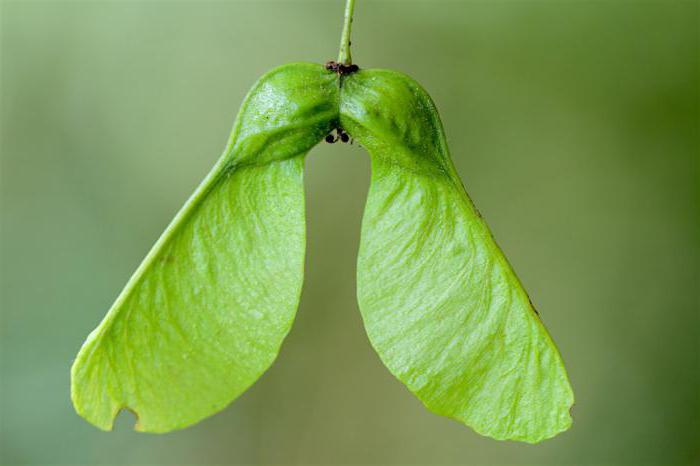

Seed use
You can also plant Japanese red maple with seeds that are placed in the ground. But it will not be possible to control their correct development. Better to resort to using a special container or tray for disembarkation. The rules for such planting differ depending on the type of plant and the specific climate. But there are common points, which are as follows:
| 1. | Put a grid from below into the selected container. |
| 2. | Land of a larger fraction is laid on the grid than the grid cells. |
| 3. | The next layer of soil is shallower, mixed with compost. |
| 4. | The seeds are laid out and covered with a small layer of soil mixture. |
If the seeds have been stored for too long, or the climatic conditions are not too suitable for your tree, then before planting the seed material is subjected to special treatment in order to improve the process of their germination.
Seedling care rules
The young shoots obtained from the seeds are pruned by the root system 3 months after they hatch. From the main root, only a third part remains, the rest is removed. Regardless of the color of the crown (green, blue, red, purple), the trees develop identically. Plants are transplanted every two years in the spring. At the same time, the soil is completely changed to a new one, the main and side roots are trimmed by ¼.Shoots can be pinned after 3-4 leaves appear.
Planting and leaving
Maple can be propagated by layering, seedlings or seeds. Seed material is planted in April to a depth of 5–10 cm. It is important to choose a loose and nutritious soil, avoid planting on salt marshes or highly acidified areas. Seedlings appear in 2-3 weeks.
If desired, it is possible to propagate the tree by layering: in the spring, cut the selected shoot with a knife and treat it with a special compound to stimulate growth, then delimit the cut with a pebble, overlay it with moss and wrap it tightly with foil or foil. A year later, the shoot that has sprouted is separated and planted separately. It is necessary to water the seedlings often: they consume about 15 liters of water per week. With sufficient humidity and the absence of severe winter frosts, young maples grow up to 1 m per year.


The main enemies of maples are the mealybug, weevil, and maple whitefly. Sometimes leaves and bark are affected by coral spot and brown rot. For the prevention of diseases and getting rid of pests, trees are treated with reagents: chlorophos, nitrafen or dimethoate. It is advisable to spray with the first onset of heat, before bud break.
Features of growing maple bonsai
Although this tree looks miniature, it has nothing to do with houseplants. It prefers to grow in the wild, along with its tall brethren. The main condition for its successful development is the availability of a sufficient amount of sunlight. With this in mind, it is necessary to select a place in the garden for the Japanese maple. It is in the morning hours that he should receive the portion of sunlight due to him.
In hot summers, the tree must be protected from the scorching sun rays. With strong heating, the leaves of the tree change their color and turn brown. But the negative impact doesn't end there. Strongly dried leaves will begin to fall off. Another enemy of the red Japanese maple is strong winds, which also have a detrimental effect on the condition of the leaves.
These trees are afraid of very low temperatures, since their root system is located at a short distance from the ground level, so there is a threat of freezing. When the temperature drops below 5 degrees, the plant can slow down or stop its development.
Watering should be treated with caution. Incorrect actions can lead to the death of the red maple. Moreover, you can use only slightly acidic or neutral water.
To create a bonsai, you need to properly trim the crown. First of all, they get rid of new shoots and small twigs. Old branches are pruned in late autumn or at the height of summer, when the plant can independently "heal" the resulting wound with callus. Pruning should not be done in the spring. This will lead to excessive loss of juice.
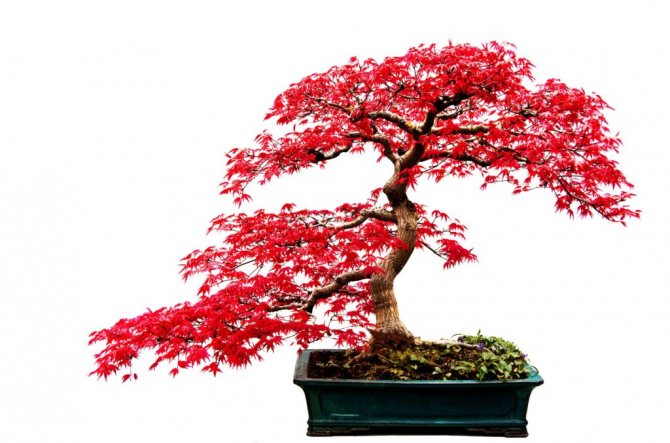

How to properly form the crown of a tree
Bonsai cannot be grown without pruning. It is worth starting this action when up to 5 pairs of leaves have appeared on the branch. As a rule, it is shortened by a couple of leaves, while large leaf plates are plucked out separately, after which cuttings remain. After a short time, these cuttings wither and fall off, and large leaves give way to smaller ones, which look beautiful on bonsai.
In July, a healthy tree should be defoliated and the growth buds plucked out, which can cause:
- slow growth;
- the formation of short shoots;
- increase in crown density.
As for red Japanese maples, such an operation is contraindicated for them, as it can greatly weaken the plant.
How to grow a red maple tree in the garden
If the climatic conditions in your place of residence are cold enough, then you can grow Japanese maple in tubs so that it can overwinter at home. The tub is very convenient for growing due to the fact that it is quite mobile and can be installed anywhere.In the presence of a bright sun, the tub can be placed in the shade, hidden under a canopy from heavy rain or hail.
In Japan, such tubs are installed on pedestals in order to better see these beautiful miniature trees. Japanese red maple goes well with ornamental shrubs, other trees, ornamental grasses and a variety of flowers. This plant will decorate any body of water, park, stone garden, front garden and any other place where you can relax. This dwarf tree is in perfect harmony with asters, chrysanthemums, oaks. Great neighbors for red maple trees are junipers, box trees, and decorative conifers.
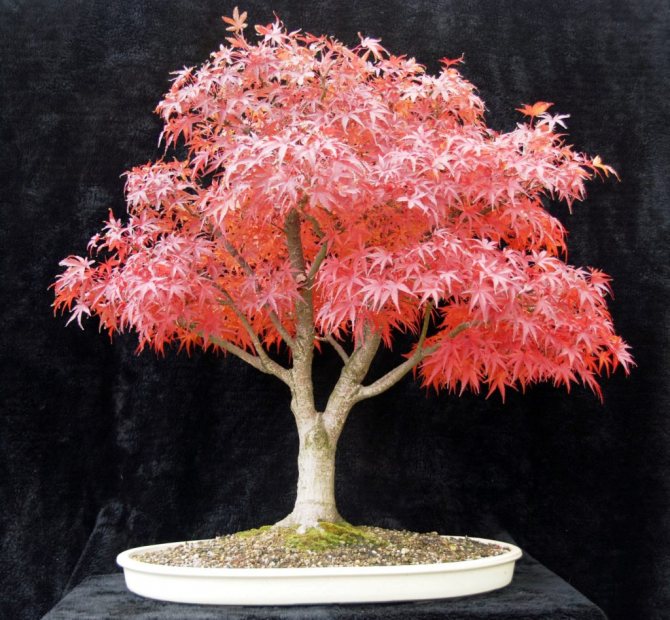

Pest control
If the maple tree grows at home, then it can be affected by some diseases and pests, such as mealybugs, aphids, spider mites, and scale insects. This can be the result of improper plant care or the presence of infested houseplants in the immediate vicinity. To eliminate these diseases, it is necessary to treat the tree with broad-spectrum insecticides. When spots or powdery mildew appear on the leaves, it is necessary to treat the plant with Bordeaux liquid. You can also use a solution of colloidal sulfur or copper oxychloride.
Garden forms and cultivars of Norway maple
In addition to the fact that the culture is widespread in Eurasia, huge areas in North America are occupied by mixed forests with its obligatory participation, while the flag of Canada is generally an image in the form of a maple leaf, which is characteristic of the species Acer platanoides.
And the fact that Canada is the trendsetter for this tree species is not accidental - the number of different varieties of maple and interspecific hybrids based on it (cultivars) on the garden market of this country exceeds 100.
If you have a strong desire to plant a tree in the yard with a beautiful five-toed type of leaf, it should be taken into account that the fruits of the maple spread with the speed and methodical nature of a winter blizzard - you will have to constantly deal with shoots weeding out (moreover, not only the owners of this site, but also neighboring areas).
There are a great many varieties for any, the most demanding and even absurd taste - some are good as a free-letting giant tree, others are valuable in the form given by a haircut.
For example, the Globosum or Globosa maple variety is good precisely because, while enlivening the space, it does not fill it completely, making it possible to see the details of the architecture of a mansion or an official building.
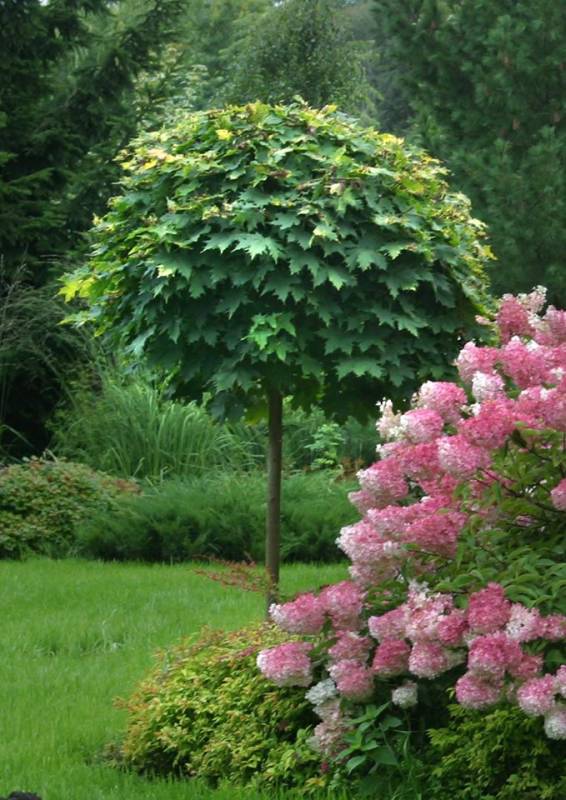

Globosum
Here, the compactness of the round crown is achieved not with the help of a haircut, but by the choice of the grafting site, which can be done either in the stem or in the root collar.
The first option gives a single-stemmed tree, the second - a multi-stemmed one, but anyway it will not reach a height of more than 6 m (with a maximum width of 6 m as well). Intense summer green leaves in autumn are replaced by a golden color with a reddish tint.
Equally valuable for landscape design is the form of Pyramidale Nanum, the name of which speaks for itself (literal translation "pyramid-shaped dwarf").
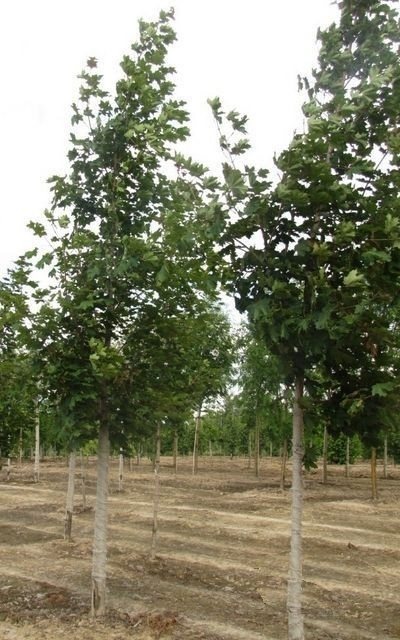

Pyramidale nanum
To solve the painful question - what would be so extravagant - will help the laying of an alley of 10-meter "trees" with crowns in the form of columns (hence the name - Columnare literally means "like a colonnade or a row of pillars, or obelisks").
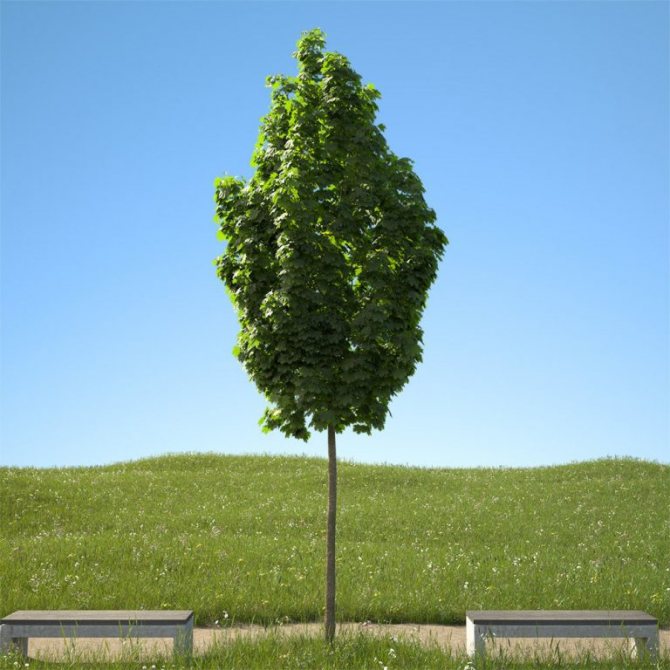

Columnare
In the same way, you can warm your aesthetic ambition by planting trees with unusual or changing foliage color during the season:
- Princeton Gold;
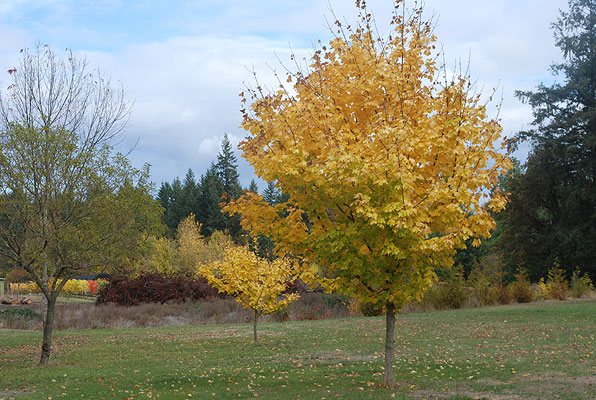

- Red Emperor;
- Deborah.
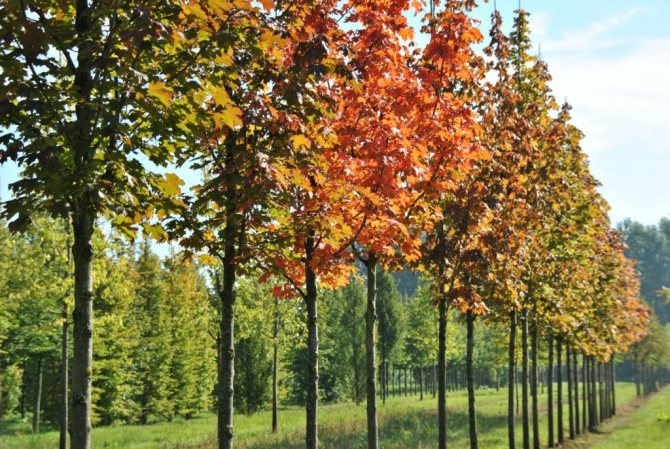

In the first variety, greenish tones are added to the bright yellow color of the foliage throughout the season, in the second, the dark red turns pale to pink, the color of the third is even more amazing: starting with purple tones, it turns into a deep green color with shades of bronze, which are completely approved in the fall.
In serovar Schwedleri, the initial "bloody" color of both foliage and shoots is replaced by greens that are standard for leaves, while the color of the shoots does not change.
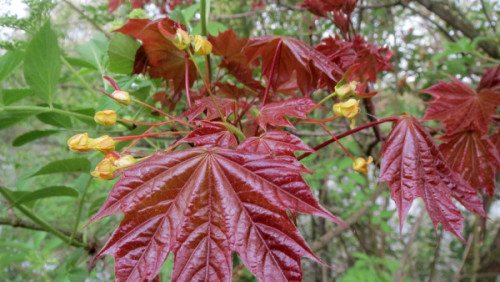

Schwedleri
The Crimson King variety does not spoil the owners with color transitions - it stands as black all season as purple-black can be.
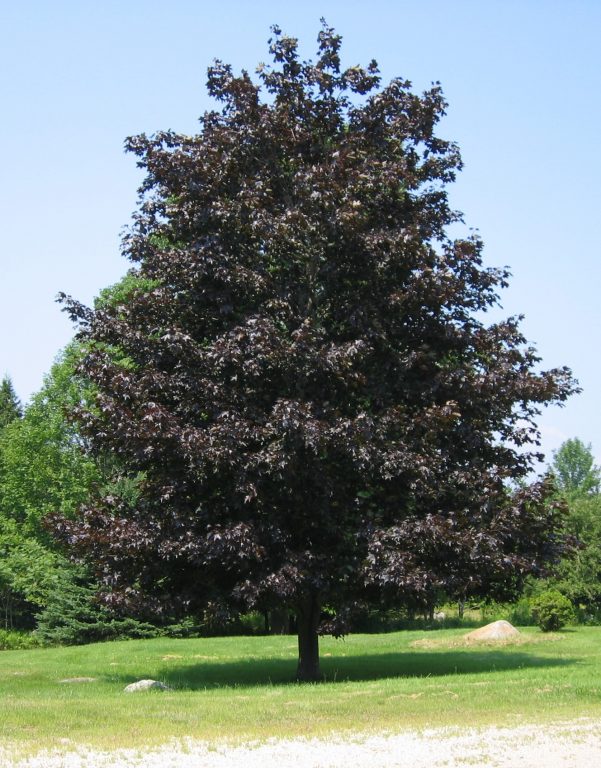

Crimson king
And the Crimson Sentry maple is even more exotic - not only is it red-leaved to almost complete blackness, it is also columnar (at a height of up to 10 m, the crown diameter is maximum 3 m).
Crimson Sentry
It would seem that this is where the wonders of color should end, but no! There are also varieties Novus and Drummondii, which differ in the edges of the leaf blade from its general basic tone.
At the first, the tips (tops of the blades) are colored yellow, the second, in addition to the pink palette of tones inherent in freshly opened leaves, has a white border edging.
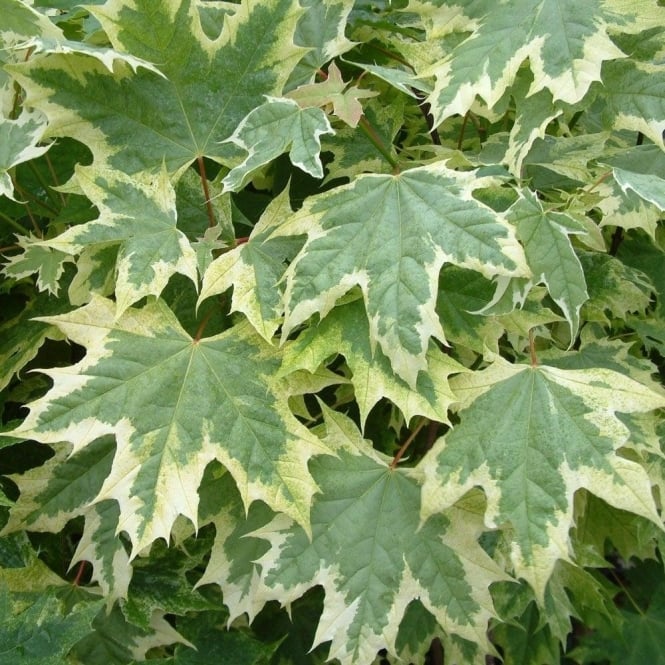

Drummondii
And the Latin translation of the name of the Maculatum variety literally means "spotted" (again, about the leaves).
The shape and appearance of the surface of the "palms exposed to the sun", although not endless, are also varied. In royal purple Royal Red, they are collected in numerous folds-wrinkles, the Latin term Palmatifida translates as "dissected to the extent of the gaps between the fingers", while Laciniatum (lobular) also means a dissection, but not so deep (only with the formation smaller blades).
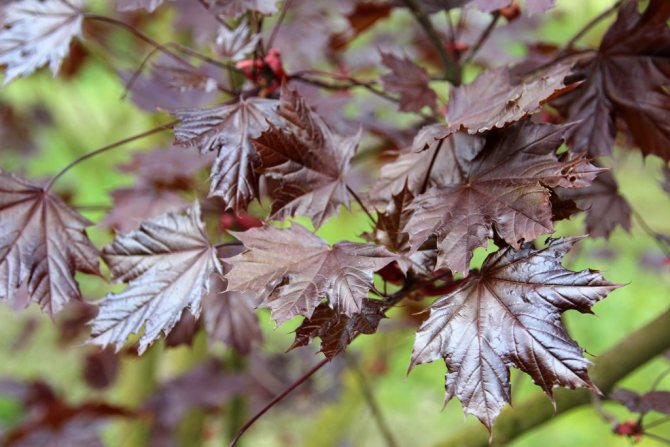

Royal red
In addition to these, there are other features embodied in the names of varieties with Latin roots:
- Erectum (raised);
- Dissectum (dissected);
- Cucullatum (nodular);
- Dilaceratum (torn apart, another option is forming an angle);
- Heterophyllum Variegatum (with multi-colored leaves).
It is worth mentioning such varieties of Acer platanoides as:
- Emerald Queen;
- Faassens Black;
- Cleveland
- Farlake's Green.
The first of these is distinguished by a high density of an oval (rounding with age) crown with a height of 15 to 20 m with its diameter equal to 8 m, formed by shiny foliage, dark green in summer and uniform yellowness in autumn.
Of all the “red-skinned” varieties of Fassens Black, the maximum is “red-black” (in summer its blackness reaches frightening gloom), at the same time differing almost by the mirror-like luster of the front leaf surfaces (with their red-green underside). When planted in the shade, the color lightens significantly.
Cleveland is distinguished by its very fast growth and longevity (life span up to 100 years), high honey content. With a growth of 12 m, it has a crown diameter of 4 to 5 m, the compactness of which is not lost throughout its life. The leaves are divided into 5-7 lobes by arcuate notches. When blooming, they are soft red, then turn green to acquire a uniform yellow or yellow-orange color in autumn. Crohn - from oval at the beginning, to ovoid in subsequent years of life.
The features of the last of the described varieties are very vigorous growth and unpretentiousness when planting even in the shade of a big city. The original shape of the crown, formed by branches growing straight upward, over the years "softens" to almost round with an increase in the friability of its structure. The palette of colors includes a transition from a bright red tone to dark green, turning into autumn orange-yellow tones.
Photo:
Cleveland emerald queen
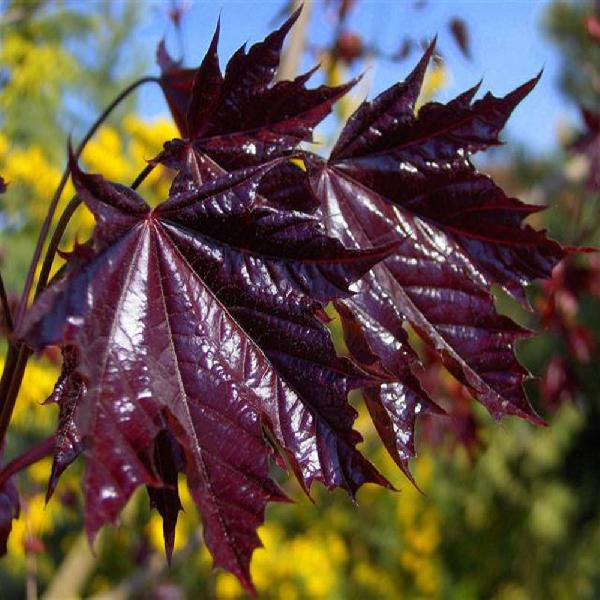

Faassens black
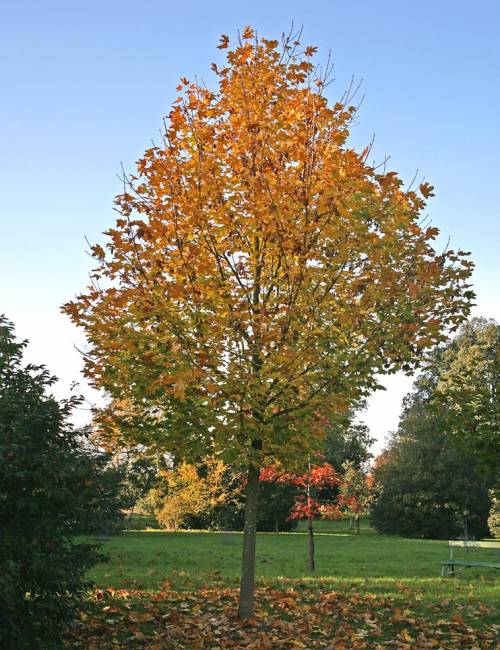

Farlake's Green
Interesting information
Almost all components of the Japanese red maple are used in lithotherapy. Particular attention is paid to leaves and seeds. The seeds are used to make decoctions that cure renal colic and kidney disease. Tinctures from maple leaves cure bronchitis and herpes, due to the presence of wound healing and antiseptic qualities in them. Certain tinctures are used to increase potency.
Some Slavic peoples believed that all dead people turn into maples. Therefore, for them these trees were sacred, they were looked after, worshiped, asked for their help. Maple beams were never used to build houses, they did not heat stoves, they did not make pieces of furniture.
Serbian legends said that if a maple tree hugs a person who was undeservedly accused, the tree will develop even better. But if a guilty person touches it, the tree will dry up. Maple branches were used by the Slavs in their rituals and holidays. They were used to decorate windows, doors, gates to scare away evil spirits.
And finally, some video information:
Mr. Summer resident informs: deciduous trees in the landscape
Trees are an integral part of landscape design.On the backyard, both an exotic magnolia variety and an ordinary aspen or alder can look spectacular.


To properly arrange a site, you should adhere to simple rules:
- The height of the tree should correspond to the area of the garden.
- Oak, elm and other large species have deep roots and can dry out the soil.
- The shape of the crown can emphasize or violate the grace of architecture. When creating the design of the territory, they take into account the peculiarities of the growth of branches.
Most deciduous plants do not require complex maintenance, but they are able to revitalize the garden and make the site exquisite and unusual.
What are the ways to grow seeds?
Cold stratification method
In this way, many types of maple are grown from seeds. These include maples:
- American
- Japanese
- Norwegian
- large-leaved
- sugar.
Seeds are picked up that are not spoiled and not rotten, but dried up are pre-soaked.
Thanks to this method, the seeds germinate quickly enough. For seeds, you will need a small plastic bag filled with growing material consisting of sand, peat moss or vermiculite or paper. To prevent fungus, it is advisable to have a sterile material. For moistening, a little water is added to the sowing mixture. And for the prevention of mold, you need to add just a little fungicide.
Next, the seeds are packed in 25 pieces in a bag, which is tedious to iron with a palm to remove air and close with a fastener. The bags are placed in the refrigerator, where they are kept at a temperature of 1 to 4 degrees Celsius, which promotes germination. Some species are quite picky and a temperature difference of a couple of degrees will negatively affect the growth of seeds, For example, the American maple seed feels comfortable at +5 degrees, and +3 degrees is enough for red maple seeds.
Most types of seeds are in the refrigerator for 3-4 months, but 40 days is enough for large-leaved maple. Every fourteen days, the bags should be checked for excess or lack of moisture, mold, etc. When growth begins, the seeds are removed from the refrigerator. Sprouted seeds are planted in moist soil to a depth of 1.5 cm. To ensure that the sprout takes root, the seeds can be planted for a while in a tray.
Cold and warm stratification method
This method is well suited for mountainous and Asian species with a very hard shell that needs treatment in the form of an incision, soaking in peroxide, in warm water. For two months, the seeds are stored at a temperature of 20 to 30 degrees. Further, the seeds are subjected to the above-described cold stratification method.
Growing maple seeds directly in the soil
In some species of maples, for example, silver maples, seed discharge occurs at the beginning of the growing season. These seeds do not hibernate, they do not need additional care. You need to plant the seeds almost after harvesting and they will germinate quickly. Planting consists in placing the seeds in moist soil mixed with fallen leaves without additional maintenance.
Some seeds may not grow in the first year of planting, and will germinate only the next. When a small percentage of seeds germinate, there is a chance that they have been spoiled. In this case, it is advisable to plant new ones.
Maple grown from seed can grow up to 30 meters in height.
Having decided on the desired type of maple, we purchase or find and collect seeds ourselves, now it will not be difficult for you to grow a maple from seeds at home. Fortunately, in our country there is a large selection of varieties of this fabulous tree.
The grown tree will delight you and then your grandchildren!
Planting a seedling
The tree attracts attention with its orange or red crown and grayish bark of the trunk. There are several varieties of plants, seedlings are chosen taking into account the size of their own plot.
Japanese maple has a peculiar color of foliage
Purchase young maple in a container. So the roots of the tree will not suffer during planting, and the soil familiar to the plant will increase the chances of survival. Choose a seedling up to a year old, with healthy leaves and no obvious damage.
First of all, find a place on the site suitable for maple, without drafts and with good lighting. The presence of large trees nearby is undesirable.
The simple landing rules are as follows:
- Prepare a 30 cm depression in the soil.
- The tree does not like waterlogging, so form a drainage layer from dropouts or small stones 5 cm thick.
- Moisten the soil, remove the seedling from the container and place it in the hole.
- Cover the top with soil containing peat.
- Water the young tree, spray the leaves with water.
Maple is undemanding to the composition of the soil, the main condition is the presence of humus. An alkaline environment is categorically unsuitable for a plant. Further watering is often organized in small amounts.
Autumn maple bouquet
It will become a decoration for any room. It is better to collect the leaves in the early morning, immediately after falling off. At night, the wind breaks them off and throws them to the ground. In the morning they have not yet been damaged or trampled by passers-by, so you can collect a luxurious autumn bouquet from them.
Autumn maples are trees of amazing beauty. You can look at them endlessly, take pictures, and make beautiful bouquets from fallen leaves.
Maple tree foliage
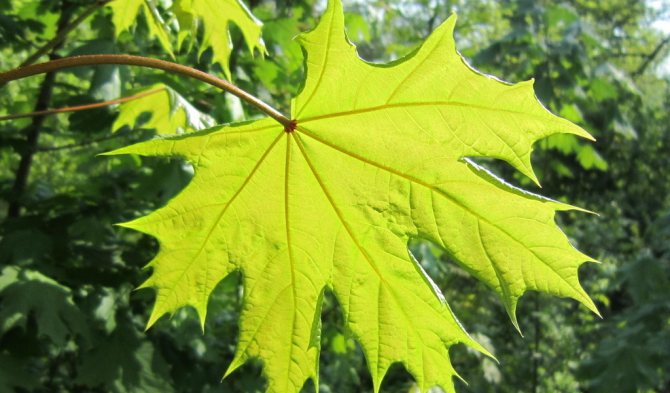

It happens:
- plain;
- large;
- bladed;
- palmate.
It is the intricate shape of the leaves that forms a beautiful carved crown of a rounded shape. There are species with compound-toed and triple foliage - for example, the Manchurian tree or the species discovered by Maksimovich.
Gardeners plant specimens in the plots, the foliage of which becomes purple or bright golden by autumn. There is a variety called Crimson King. This maple, even in winter, has a purple crown with a purple tint. The Crimson Sentry variety has a pyramidal crown shape; by autumn, its leaf darkens and also becomes purple-red. Deborah's species is famous for the red color of the foliage in the summer, and in the fall it acquires a bright yellow color with an orange tint.
There are many variegated (variegated) species. The foliage of the Drummond variety retains a dark green color until late autumn.
Finding a suitable place for planting seeds
Such a tree is light-loving, therefore it is unacceptable to allocate closed areas to it. If you have a large garden at your disposal, then you should dig a hole far from the rest of the vegetation. To be precise, 4 meters between the giants will be enough.
For soil issues, you should contact gardeners who are widely specialized in all types of activities. A few basic rules for the earth surface:
- Uniformity. That is, before planting, it is important to dig up the prepared places.
- And you also need to work well and fertilize the soil with sand, humus and peat mixture.
- Protection from underwater waters. If there are any, then a “blanket” of sand and gravel should be laid on the bottom of the pit. 15 centimeters will be enough.
How to grow a maple tree correctly to increase the tree's chance of survival? With this you need to pay attention to the next point.
Spread
Autumn maple is a decoration of many parts of the world. The plant is distinguished by its unpretentiousness, therefore it is suitable even for novice gardeners.
In Eurasia and North America, they mainly grow in temperate latitudes, but in Asia they are also found in the tropics. You can find them in the mountains of Borneo and on the island of Sumatra, as well as in the Philippines and Malaysia. Some varieties of maple also grow in the Mediterranean. These trees can be found in Japan. Maple grows especially extensively in the provinces of China: Hubei, Yunnan, Sichuan.There are suggestions that these places are also the place of origin of the plant, from where the further dispersal of the species began.
Maple is considered a mountain plant, but some of its species are common in the plains. Many of them are quite suitable for cultivation in fertile conditions in the cities of Russia (middle lane).
Maples are relatively thermophilic plants, especially Japanese and Chinese species. However, many of them are quite resistant to the northern winters of Russia. As a rule, in nature they do not form any continuous plantings. Trees grow interspersed with other broad-leaved species, a little less often with conifers. Therefore, the autumn maple in the forest is a relatively rare, but surprisingly beautiful bright spot among other vegetation.
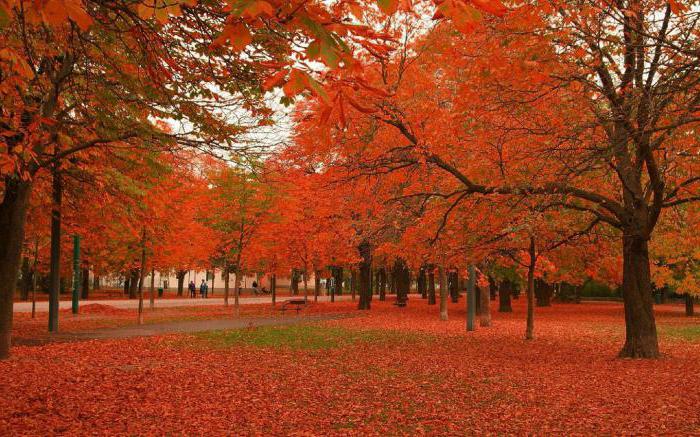

Maple seeds in folk medicine
Maple seeds, photos of which are presented in the article, are effectively used in traditional medicine.
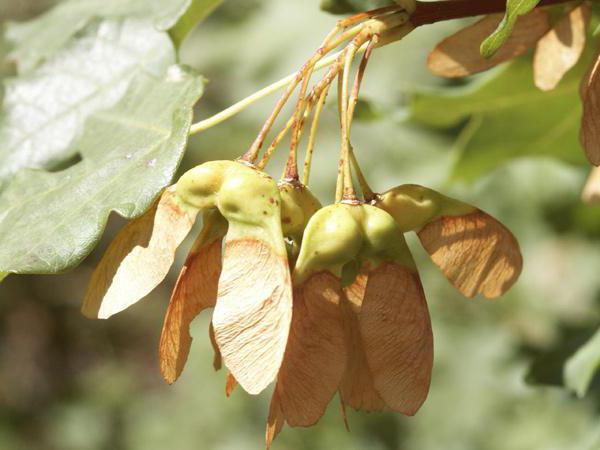

Treat herpes and bronchitis with an infusion of maple seeds, a teaspoon of which needs to be poured with a glass of boiling water and let it brew for 30-40 minutes. Consume 50 grams before meals 4 times a day.
Planting a maple tree from seed is a long-term and worthwhile investment in the future of your own garden. Several generations of descendants will rest under the shade of this gorgeous tree.
Scope of application
It is believed that real maple syrup is only found in Canada, but this is not the case. There is a Russian farm where sap is extracted from trees in the Leningrad Region, not far from St. Petersburg. In addition to obtaining juice, maple trees are used:
- for carving (this is a durable wood, ideal for decorative work);
- for the manufacture of elements for guitars, violins, cellos (craftsmen discovered the acoustic qualities of maples long ago);
- in apiaries to attract bees. Maple honey is delicious and healthy.
Also, craftsmen often use veneer obtained from the root part. It is needed in order to apply patterns to a special type of furniture - marquetry. When cut, these natural patterns look like original designs, each of which is one of a kind.
It is interesting!
Maple parquet flooring is indispensable in the dance class - because of its hardness and resistance to wear and tear.
Pest and disease control
Like all garden crops, ornamental maple often encounters pests and diseases. Most often, the following ailments may occur:
| Powdery mildew Signs: an infectious lesion of foliage, in which physiological processes and normal nutrition are disrupted. It manifests itself as a profuse white bloom in May-July. Control methods: watering with sow thistle infusion. You will need 1 kg of grass soaked in 3 liters of water. The infusion is left for 10 hours, watering |
| Black spot Signs: black, uneven and bumpy spots appear on the foliage. Control methods: spraying with copper sulfate or a solution of laundry soap. Calculation - 300 g per 10 liters of warm water |
| Maple weevil Appearance: it is a small green insect with an elongated nose. Control methods: only special preparations - Inta-vir or Decis |
| Mealybug Appearance: small white insect with a long tail. The body of the worm is covered with multiple white bristles. It lives mainly on the inside of the leaves. Control methods: garlic solution, which is prepared at the rate of 3 liters of water and 50 g of grated garlic. Spraying is carried out only in dry weather |
| Ash Shank Appearance: a dangerous beetle that emits a mouse smell. At night, it feeds on foliage, leaving a smaller part of them. In a couple of nights, it can destroy a young tree. Control methods: Decis |
Working with a handle
A quicker way to create a maple bonsai with your own hands is to take a finished tree stalk and transform it.
- A blank twig is prepared in early summer: they choose the one they like, it should not have a formed bark.
- At the base of the cutting, an annular cut of the skin and rough woody part is made. Roots will develop here. The second same incision is made 2-3 cm higher than the first.
- Remove the bark and the hard part between the incisions.
Next, the roots are germinated for the subsequent planting of the blank twigs.
- A root-forming hormone is applied to the cut area in the form of a powder or gel.
- To activate the work of the substance, moistened sphagnum moss is attached to the treated cut, sealed with polyethylene and left in a dark, cool place.
- After a few weeks, the roots will show themselves through the applied protection, then the bandage can be removed.
For germination, you can use a mixture of good compost and sand: the cut part of the cutting is placed in a moistened substance until roots appear.
After the formation of confident roots, the cutting is separated from the mother branch.
Escape landing
They take a pot with drainage holes, fill it with round pebbles, soil (80% crushed bark and 20% peat) in an amount sufficient to securely fix the tree. A thin bark is removed from the shoot, without violating the integrity of the roots, the bare part is placed in the ground.
A little sphagnum moss can be added to the soil. It fertilizes and softens hard water for gentle root care.
To enhance the fixation, a peg is inserted into the pot, to which a young tree is tied.
Do-it-yourself bonsai cultivation by cuttings is available only in cases where the tree is planned to be placed on the street... Even full care is not able to replace the native element for a wild tree. During the period when the color of the foliage changes, the composition can be brought into the house, but not more than for 1-2 hours.
Soil and capacity
To grow Japanese maple from seeds, you need to prepare the soil and choose the right container.
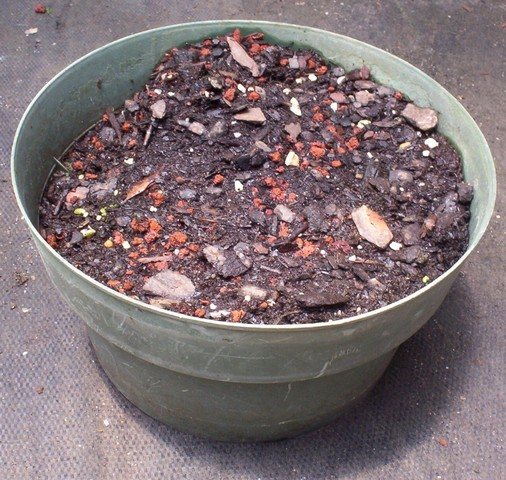

For cultivation, a nutrient substrate is used, which is called akagama (in nature, such a soil is found in one of the Japanese prefectures). Bonsai substrate should:
- good moisture retention;
- be loose, so as not to obstruct the access of oxygen to protect against soil acidification and root rot;
- contain enough nutrients.
It is prepared by mixing humus, alumina and sand in a 1: 1: 1 ratio. The second option is better for deciduous trees, which include blue maple: turf and sand in a ratio of 7: 3.

